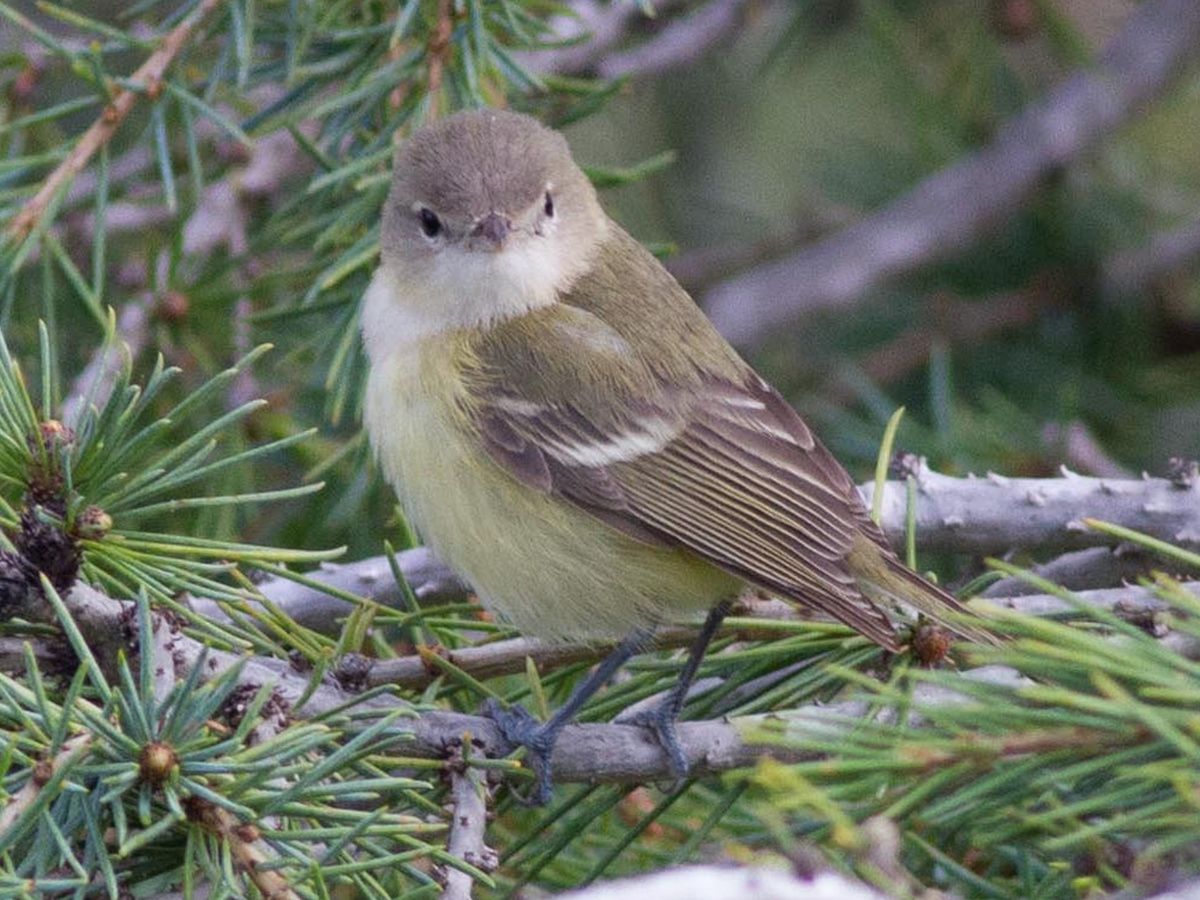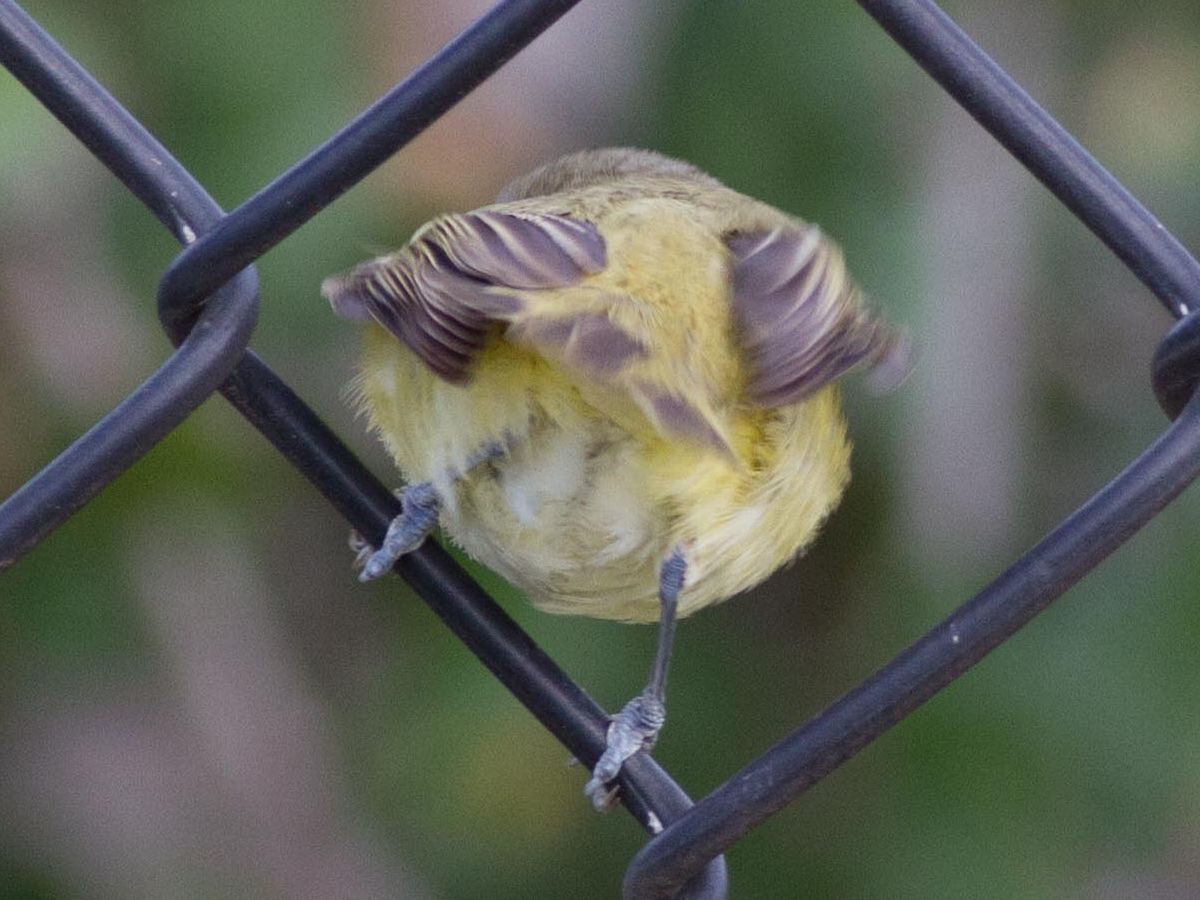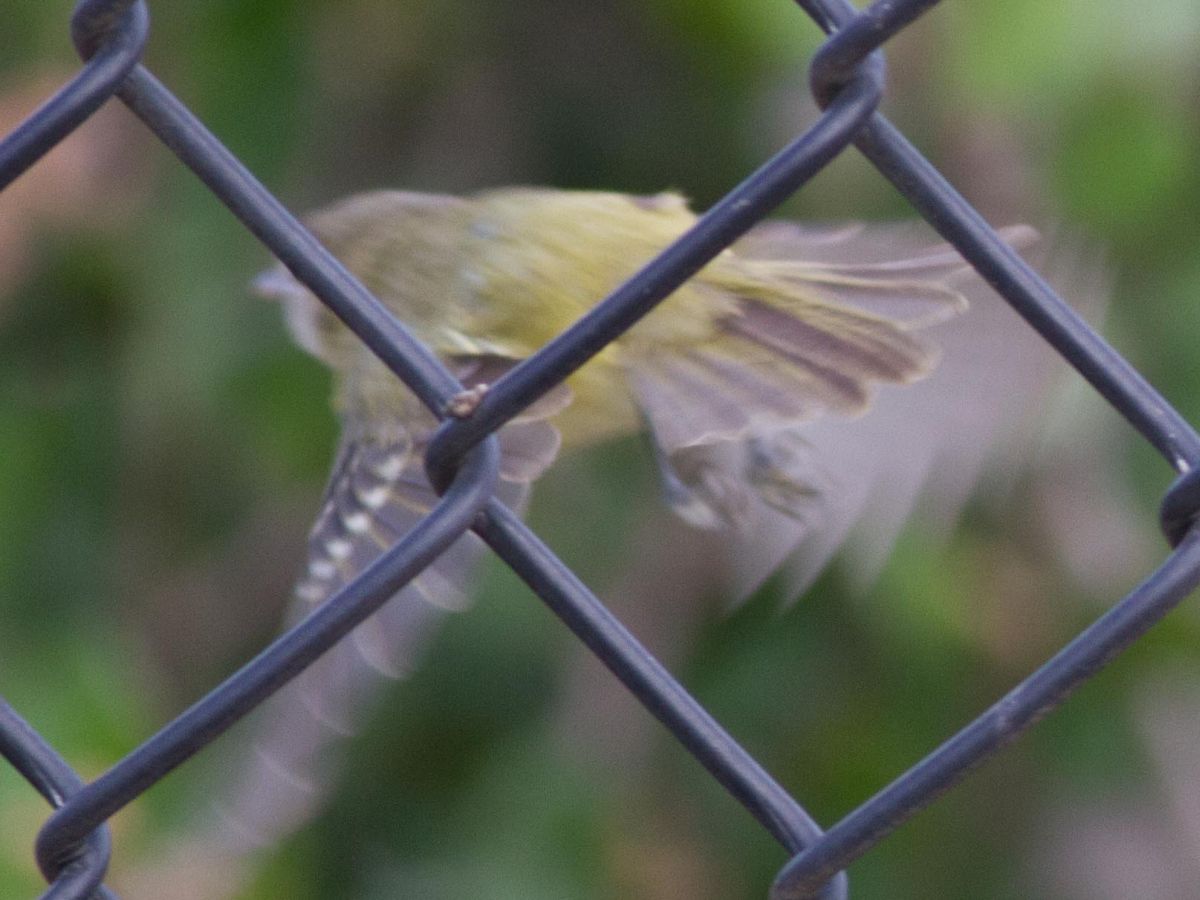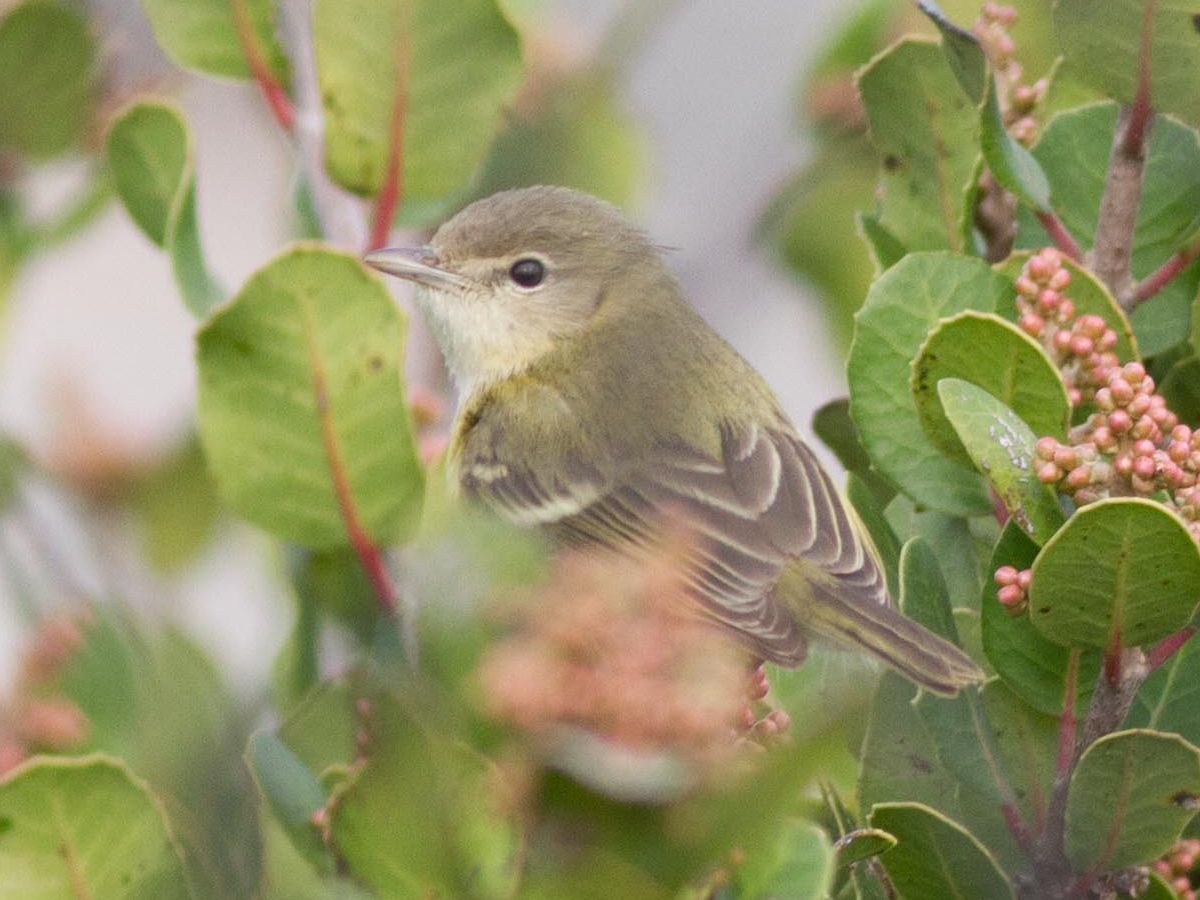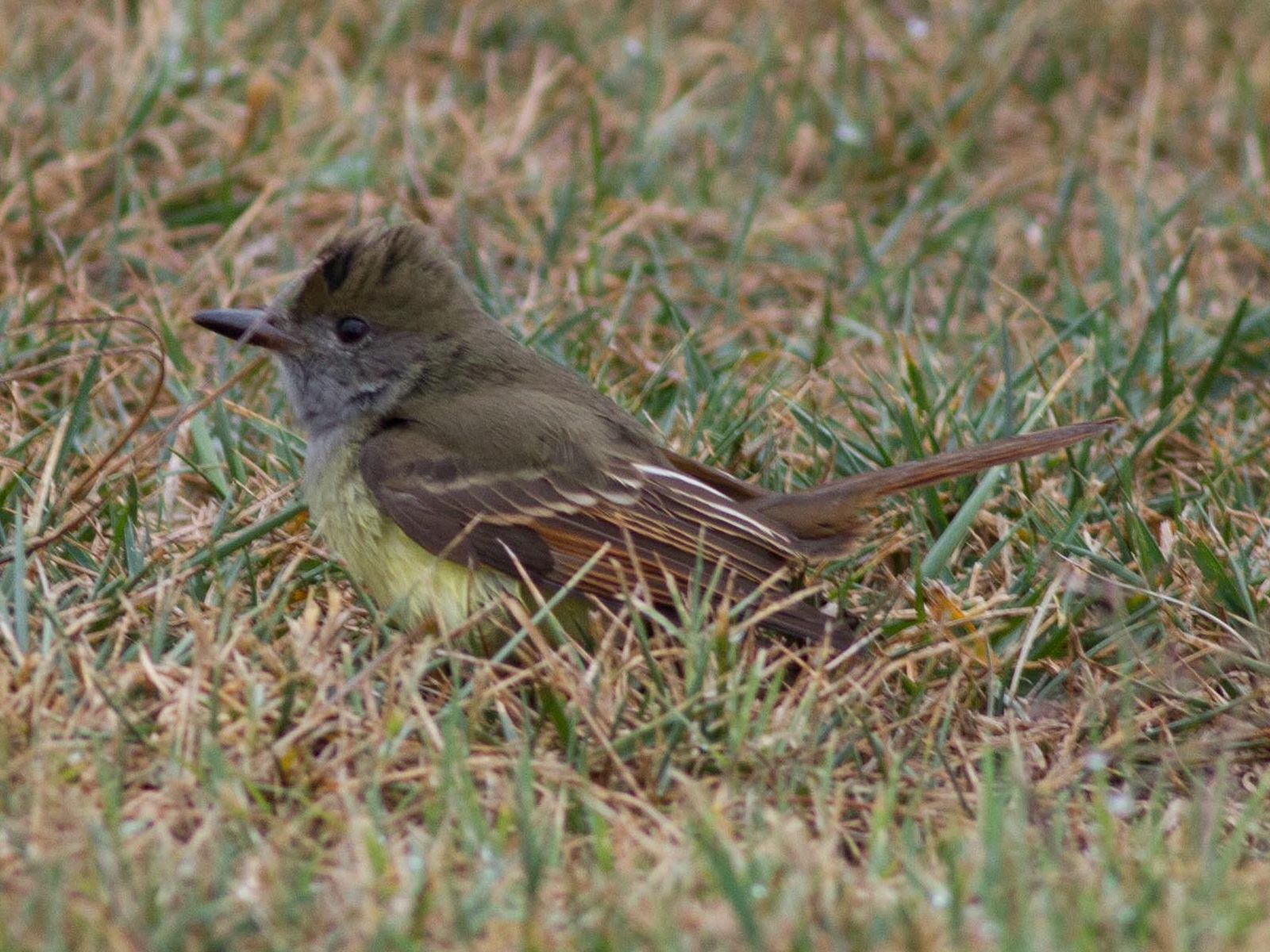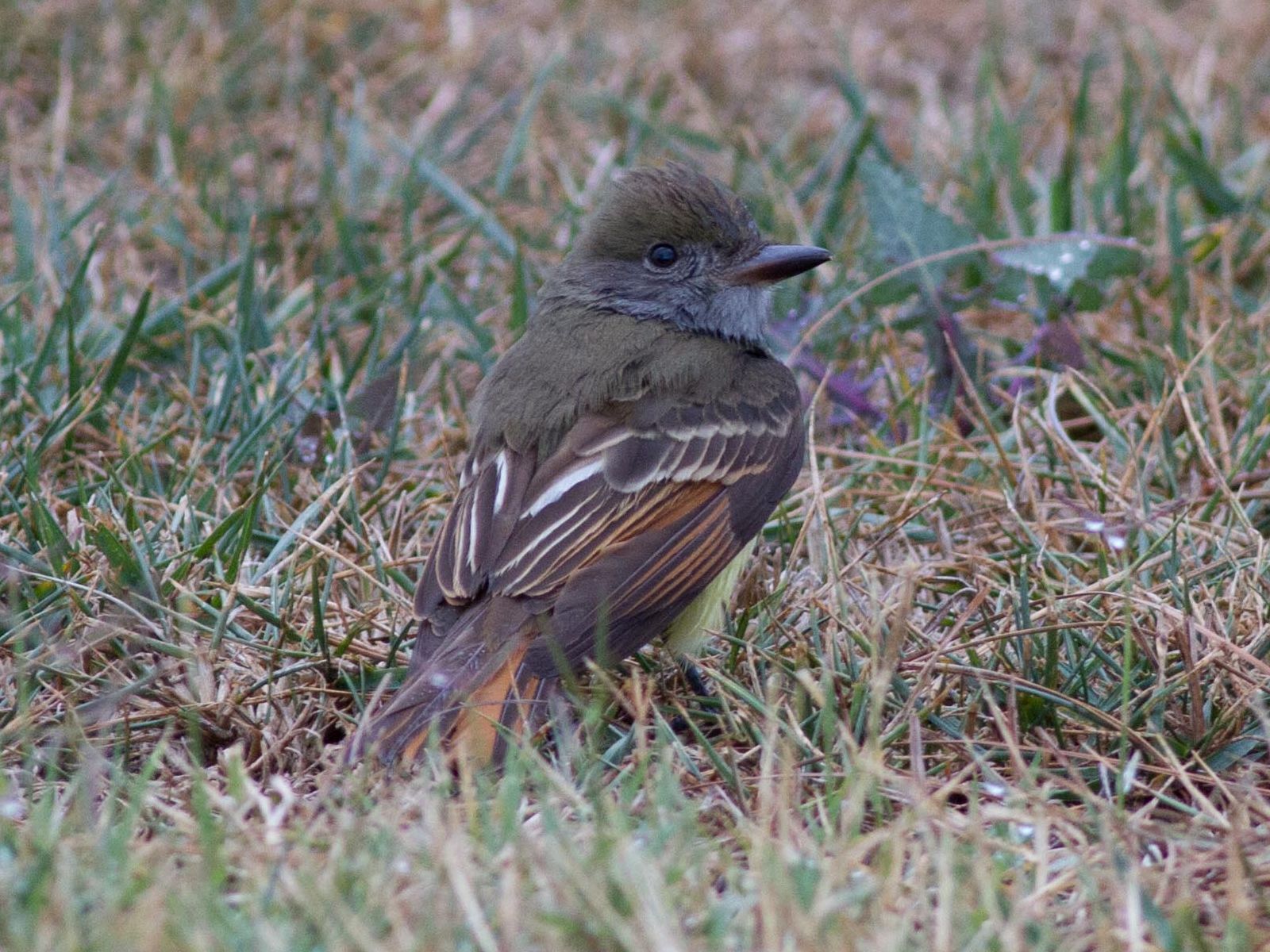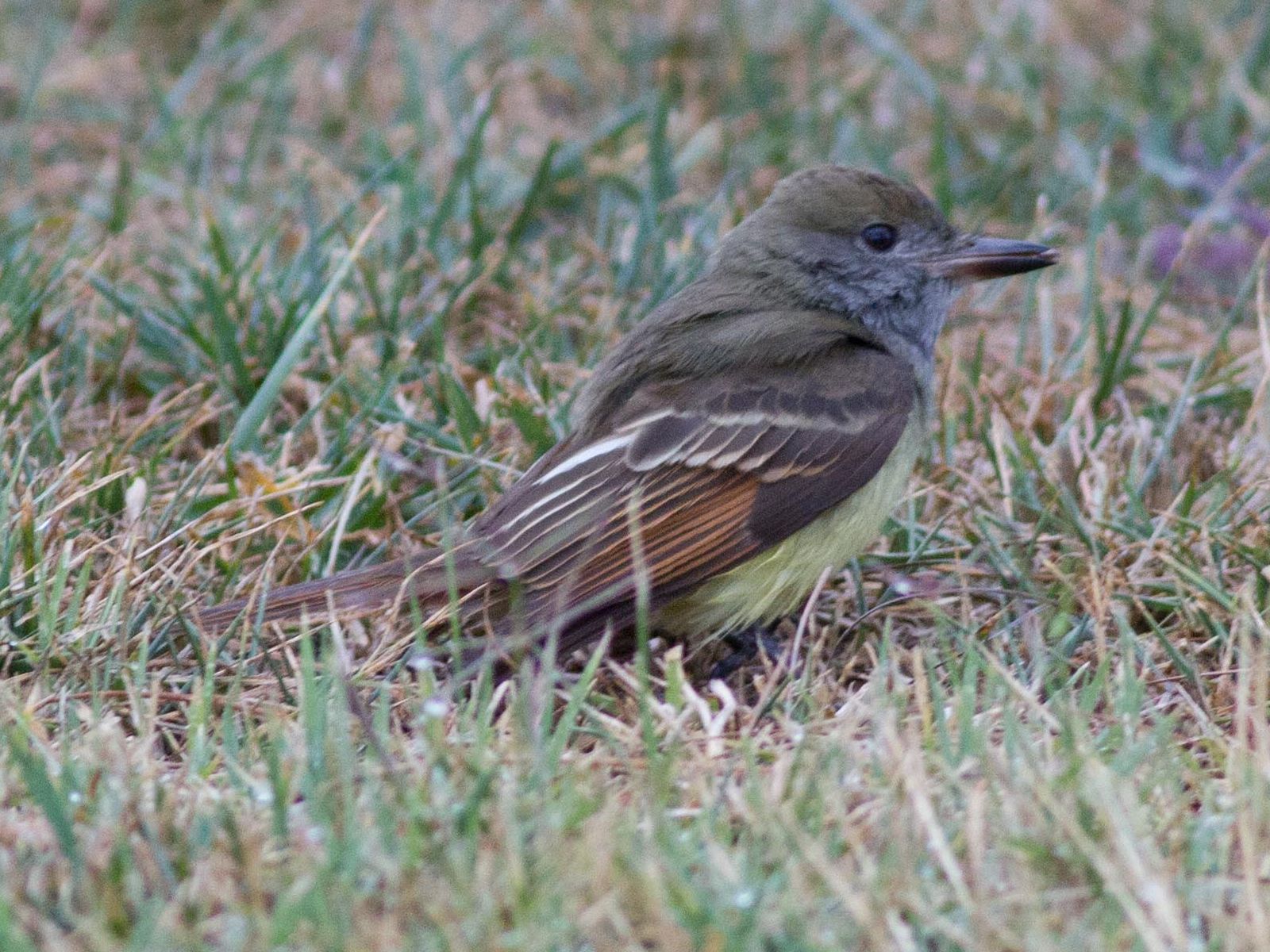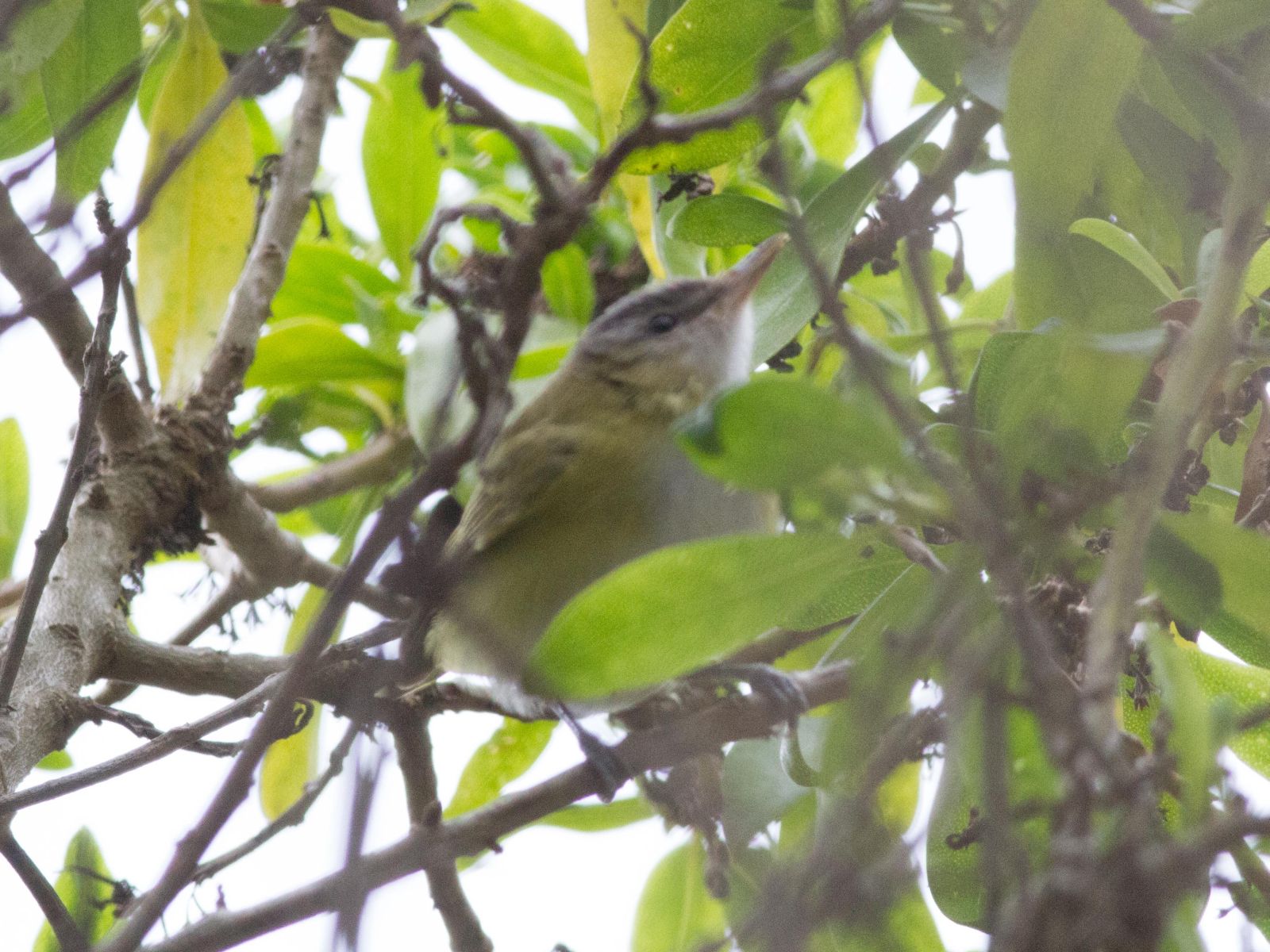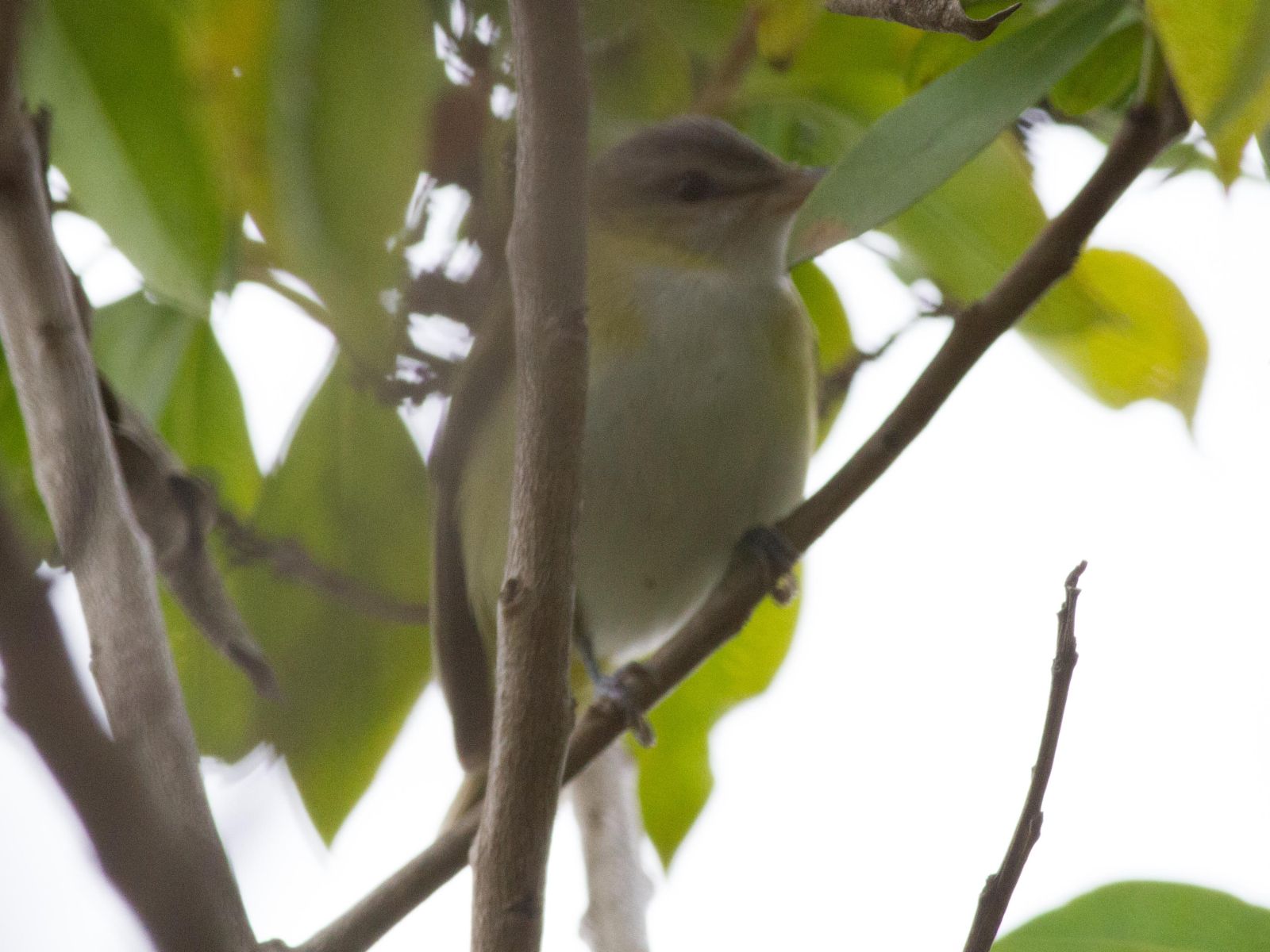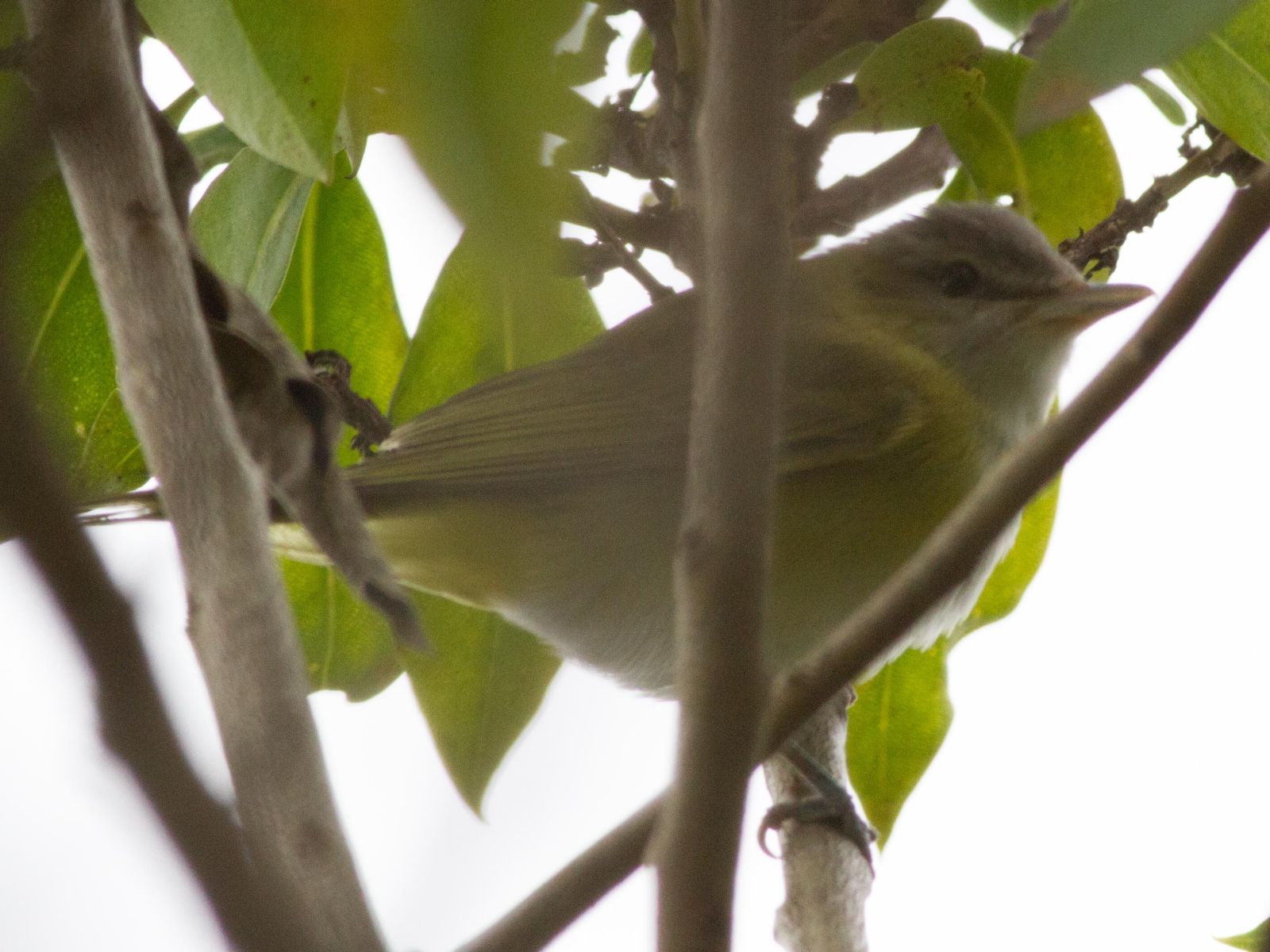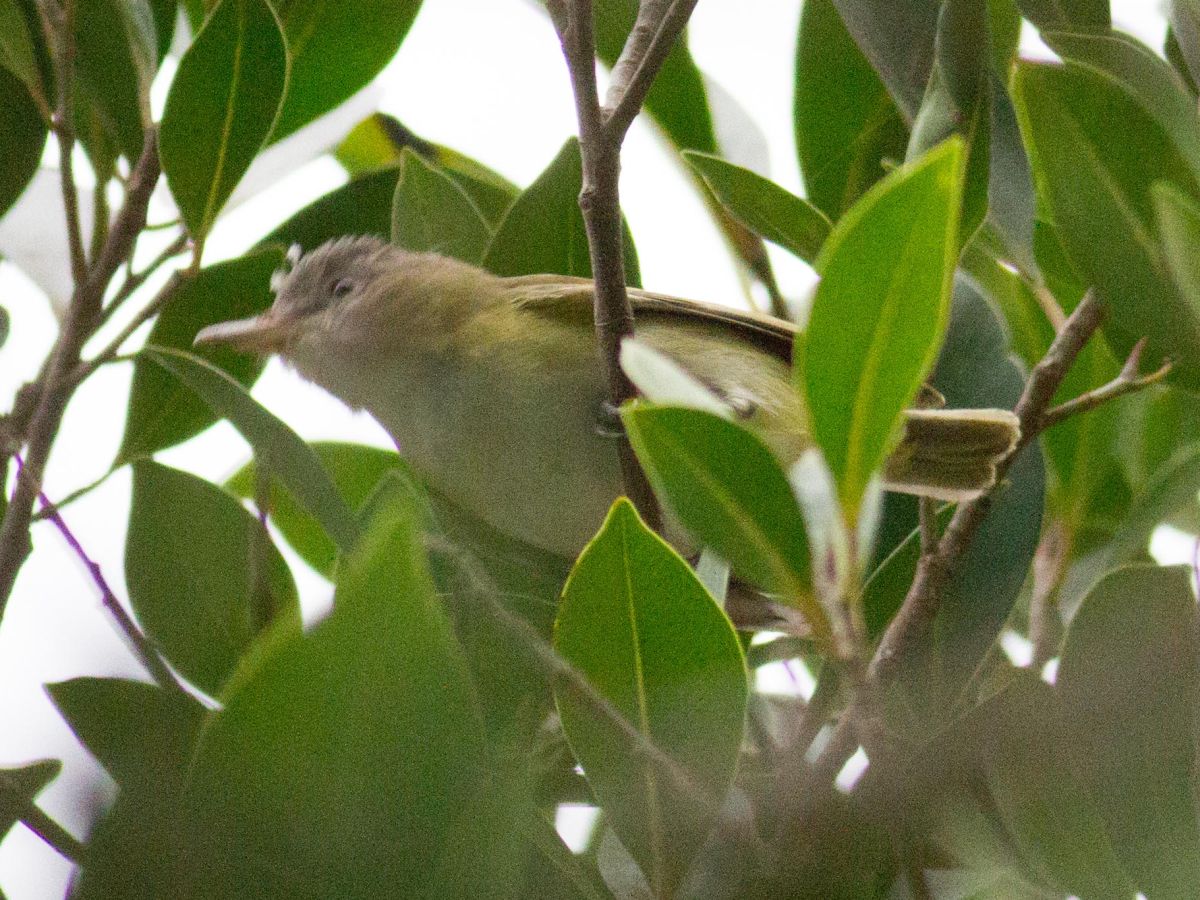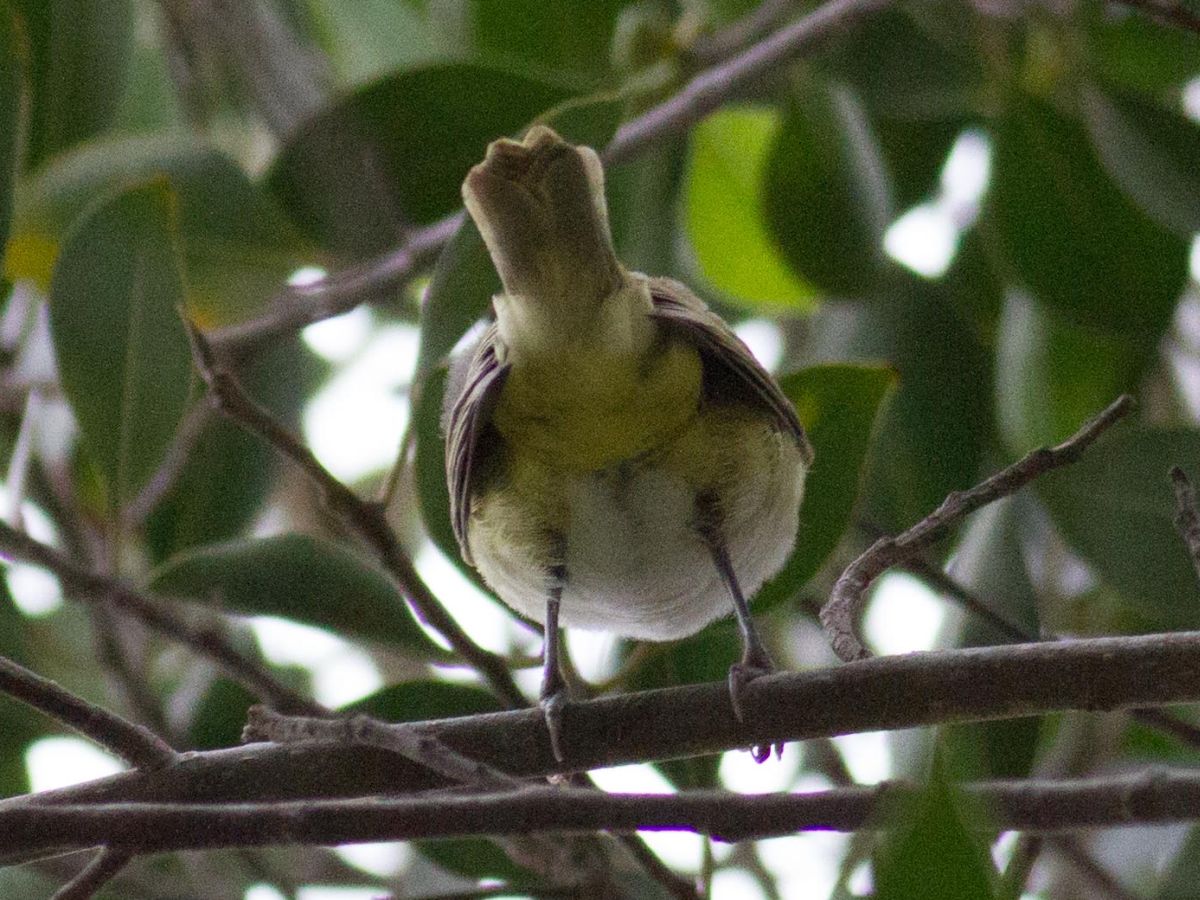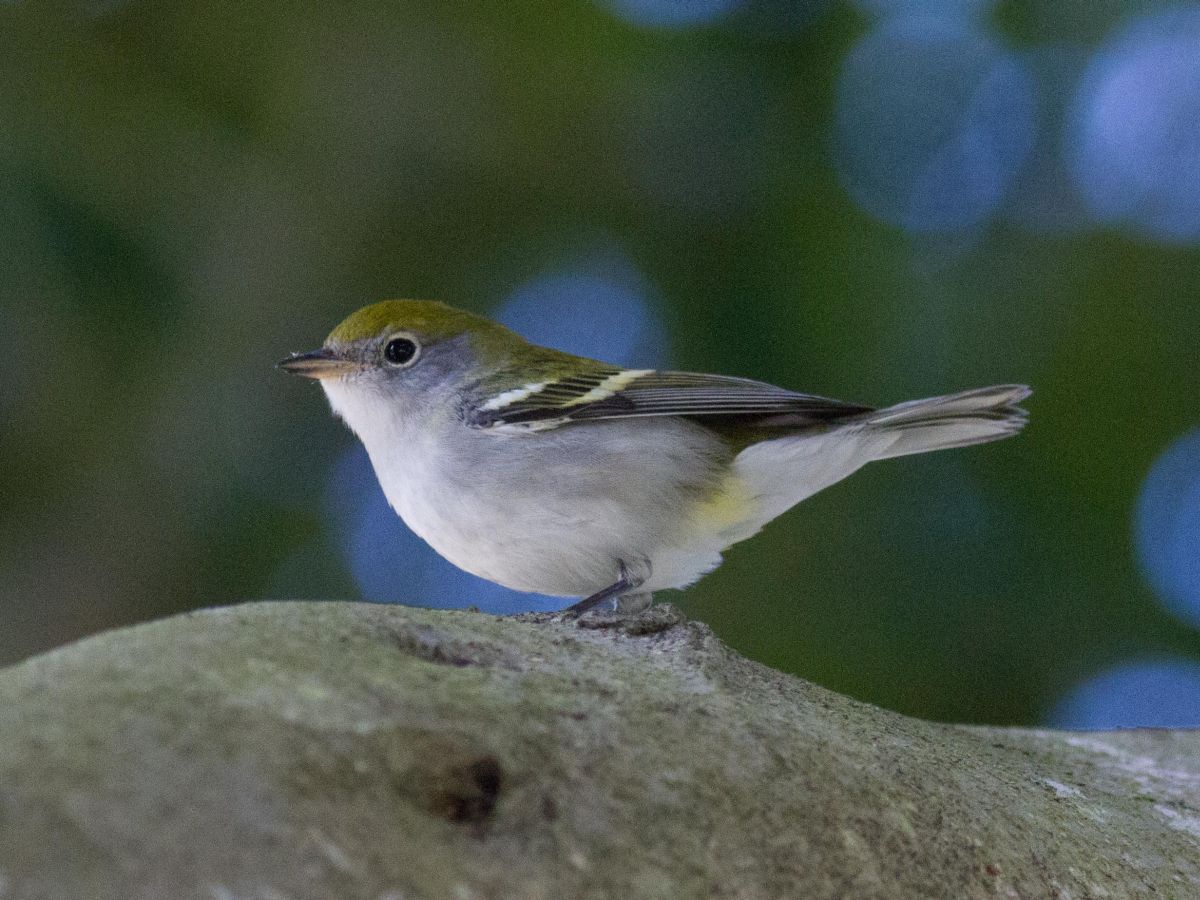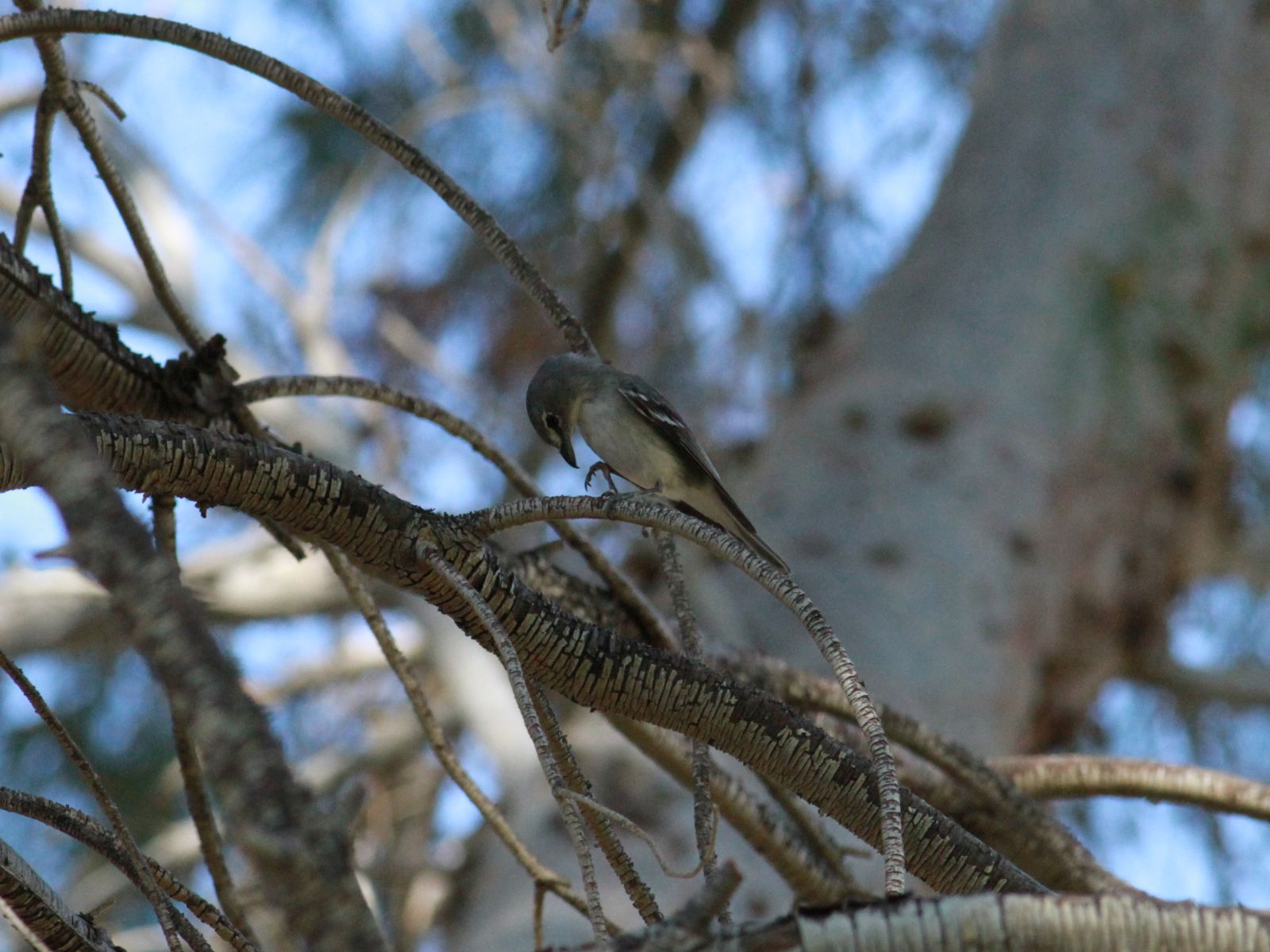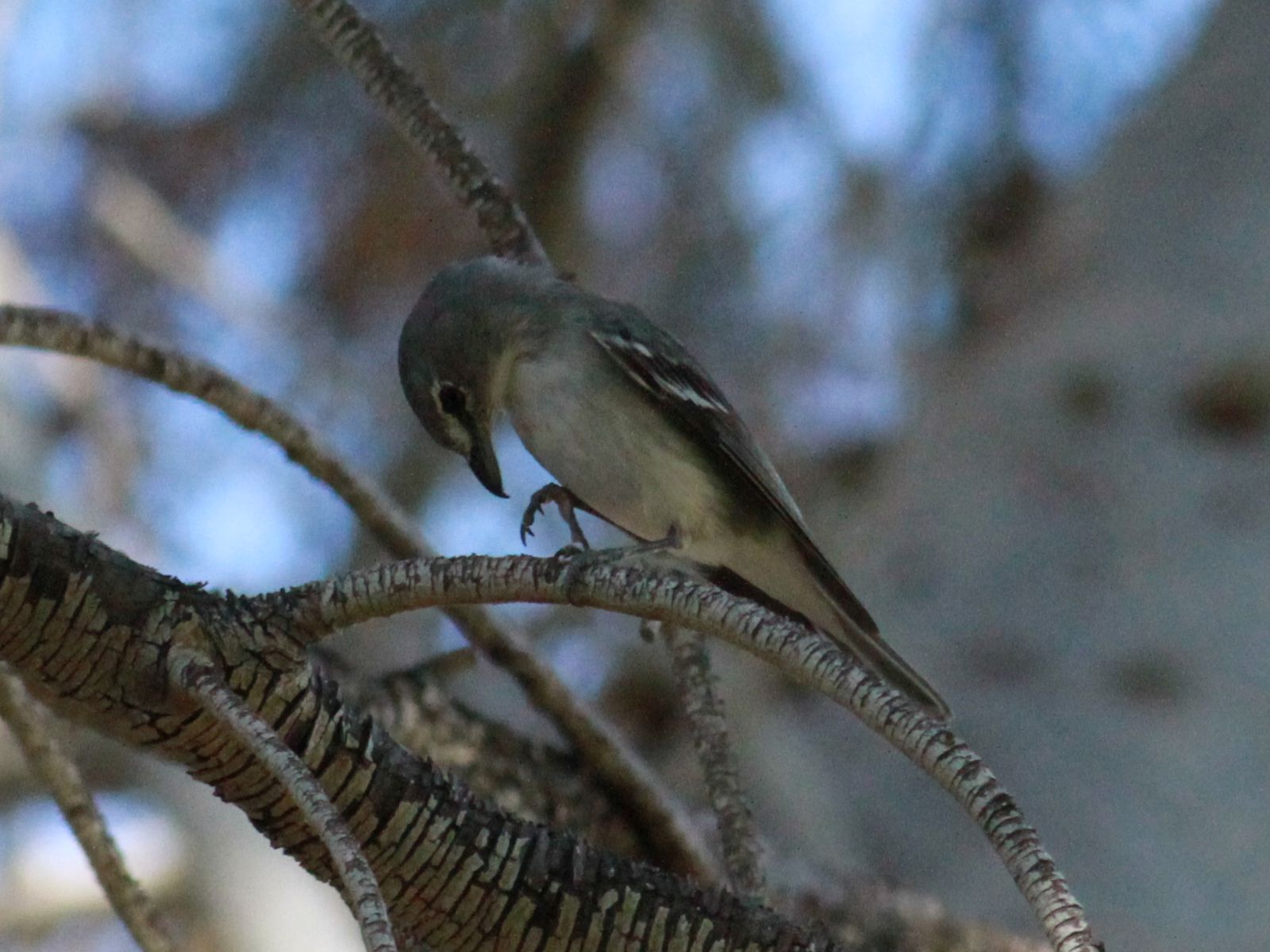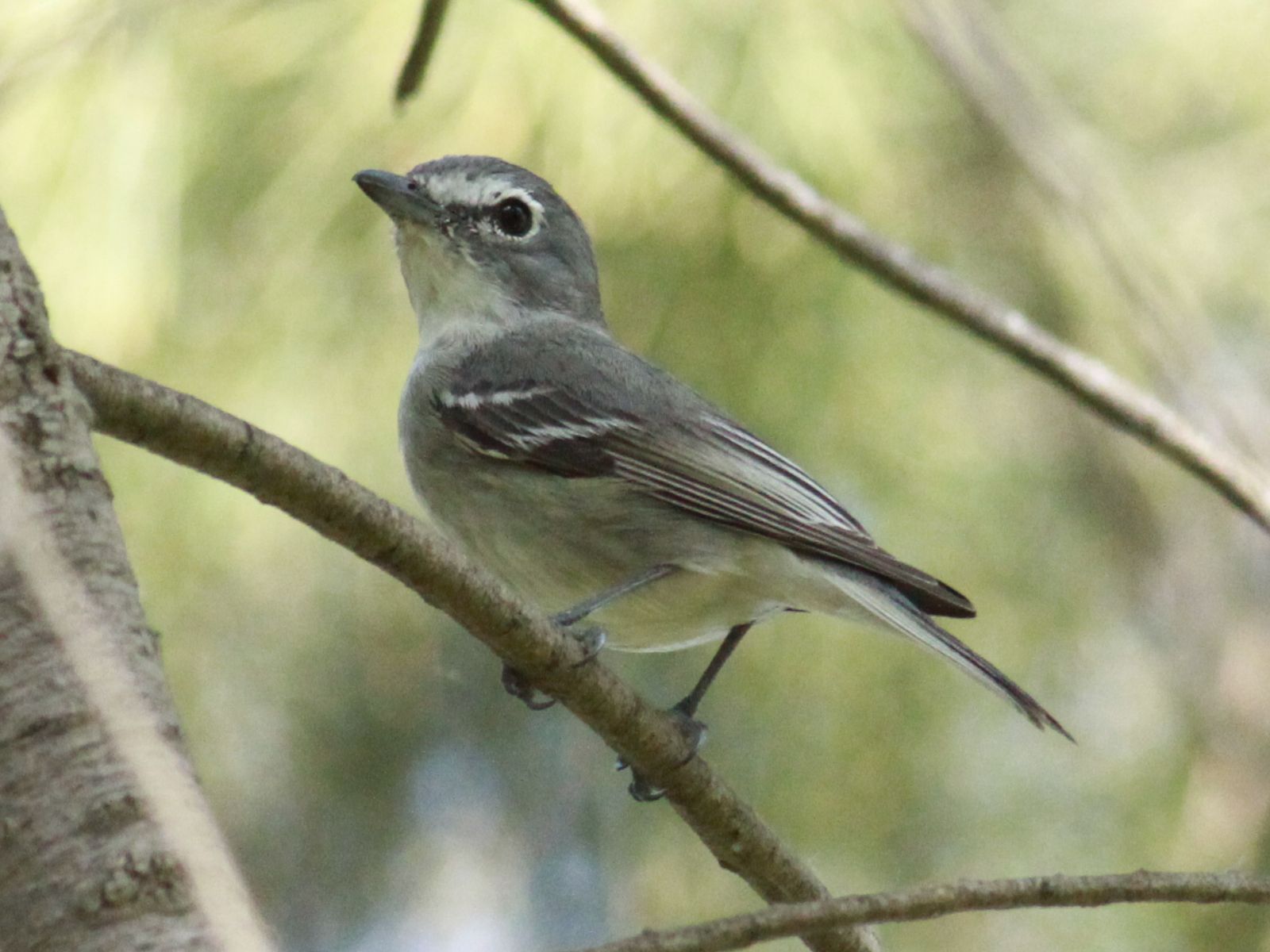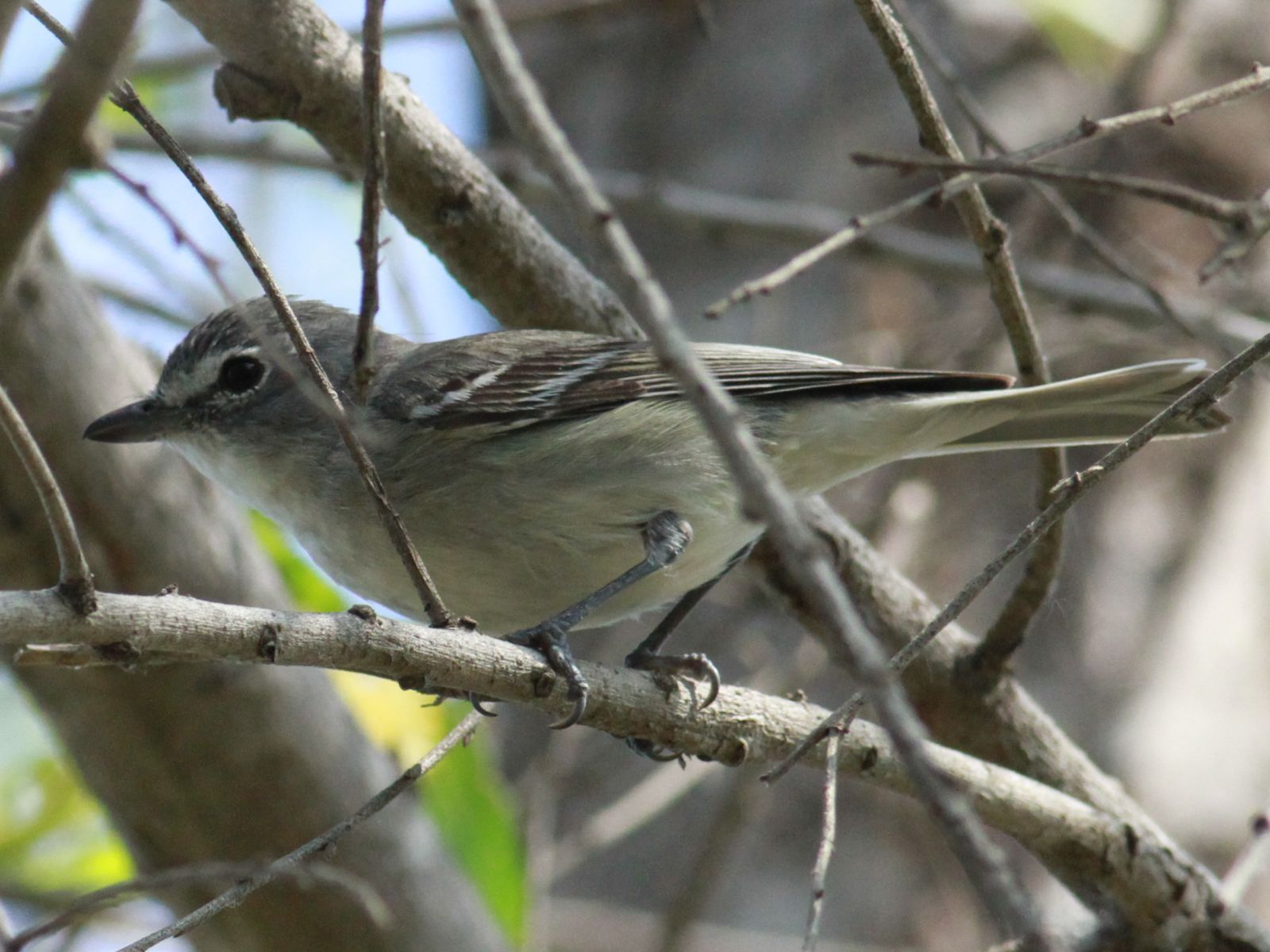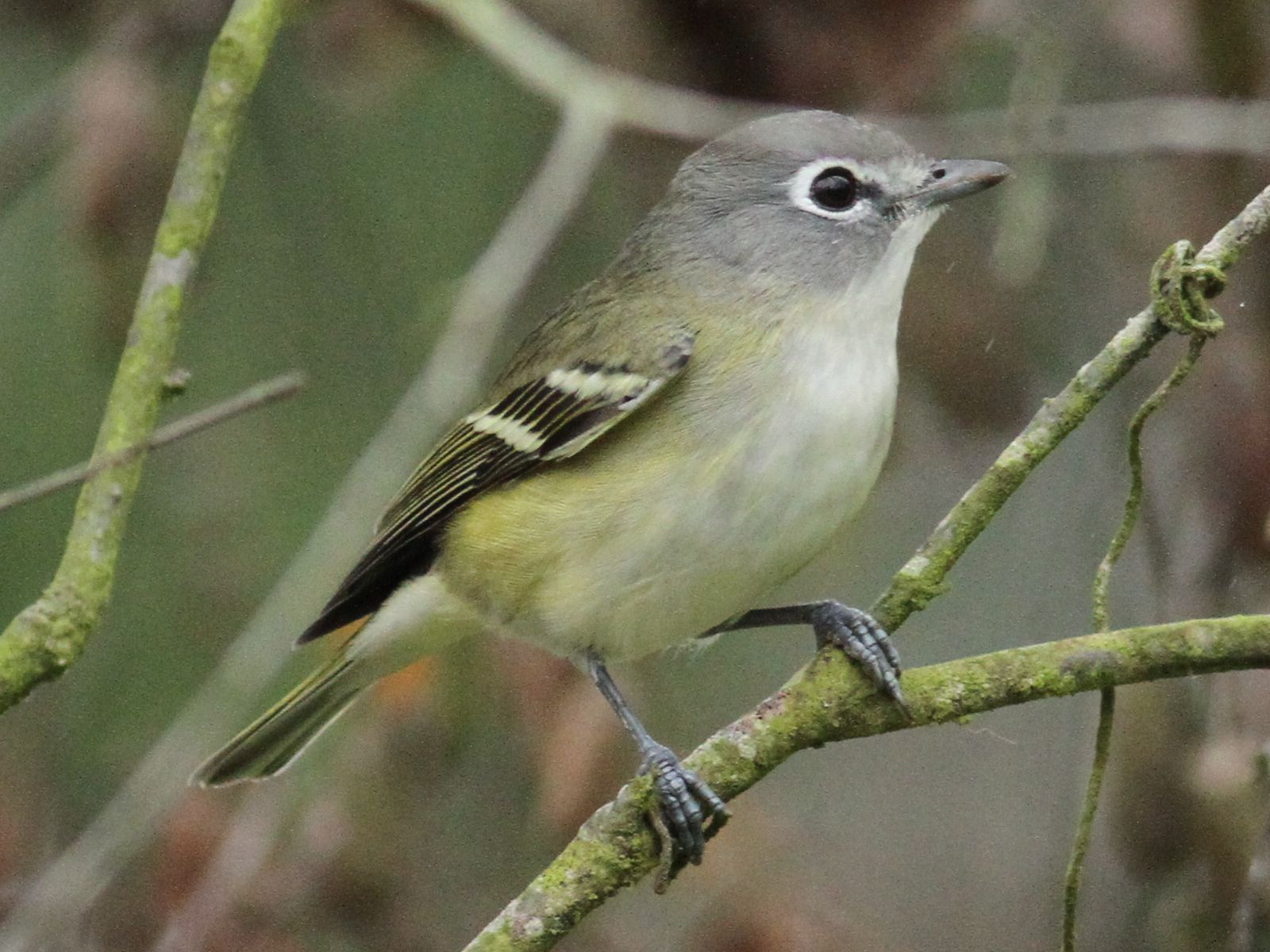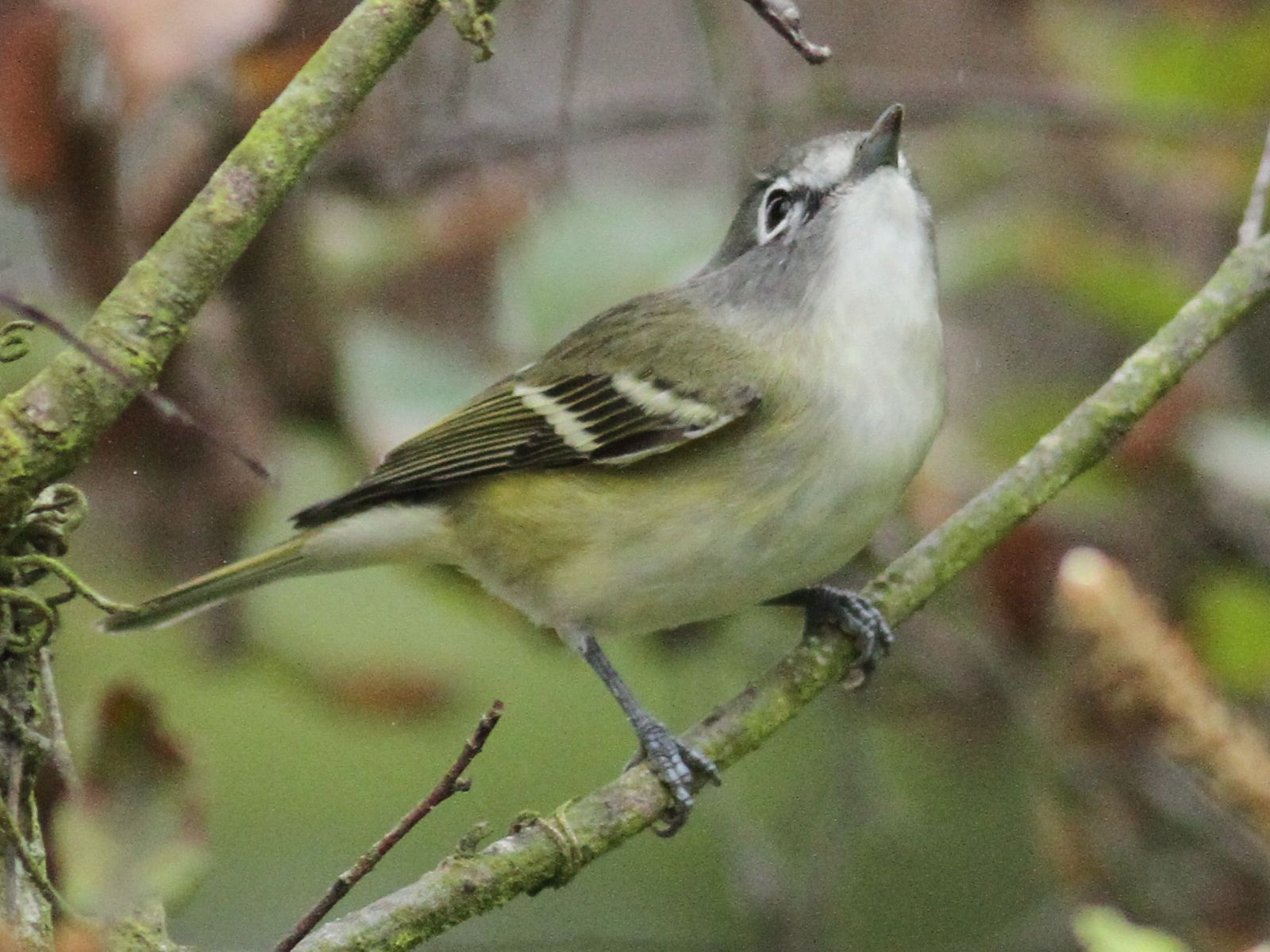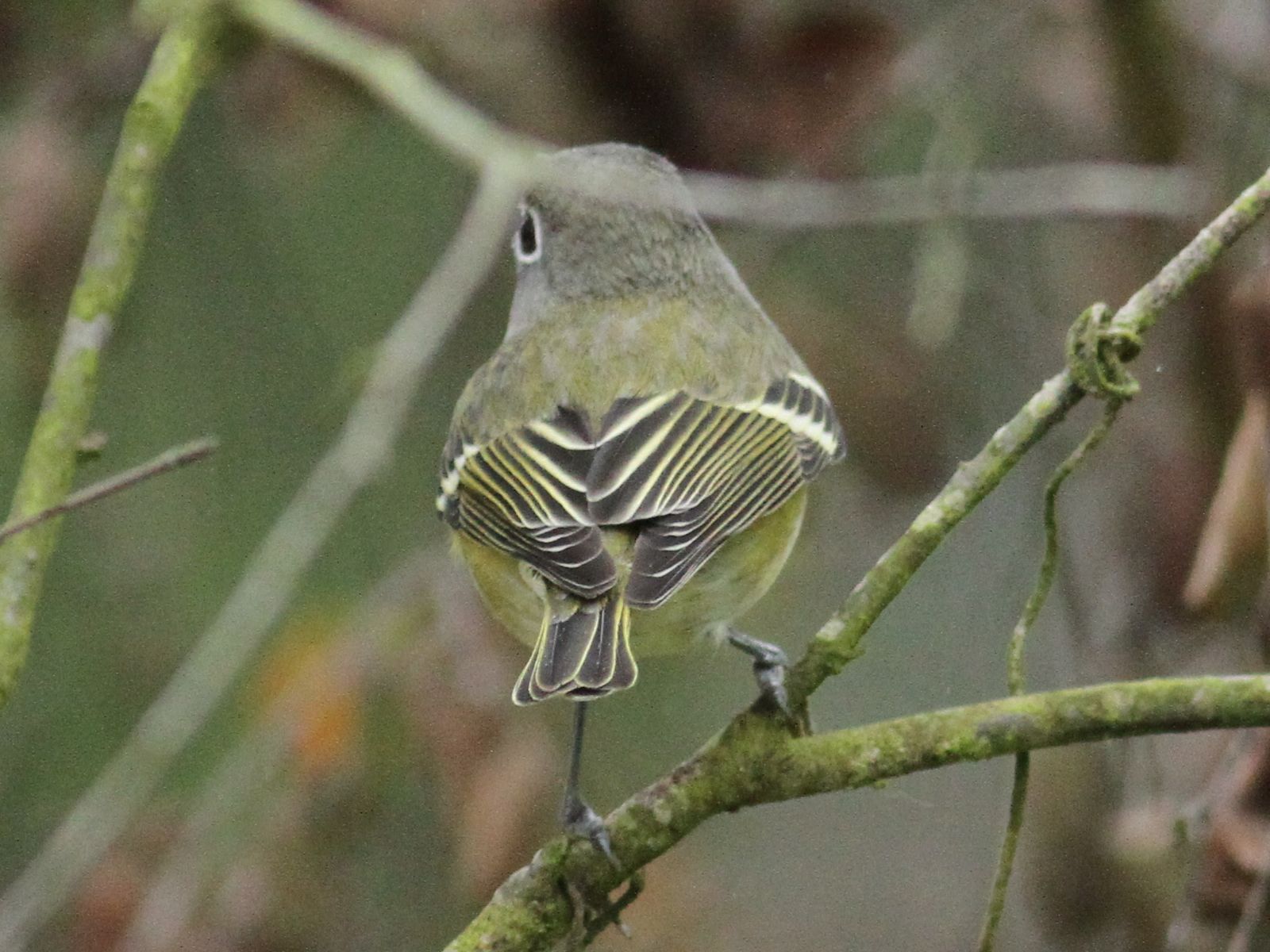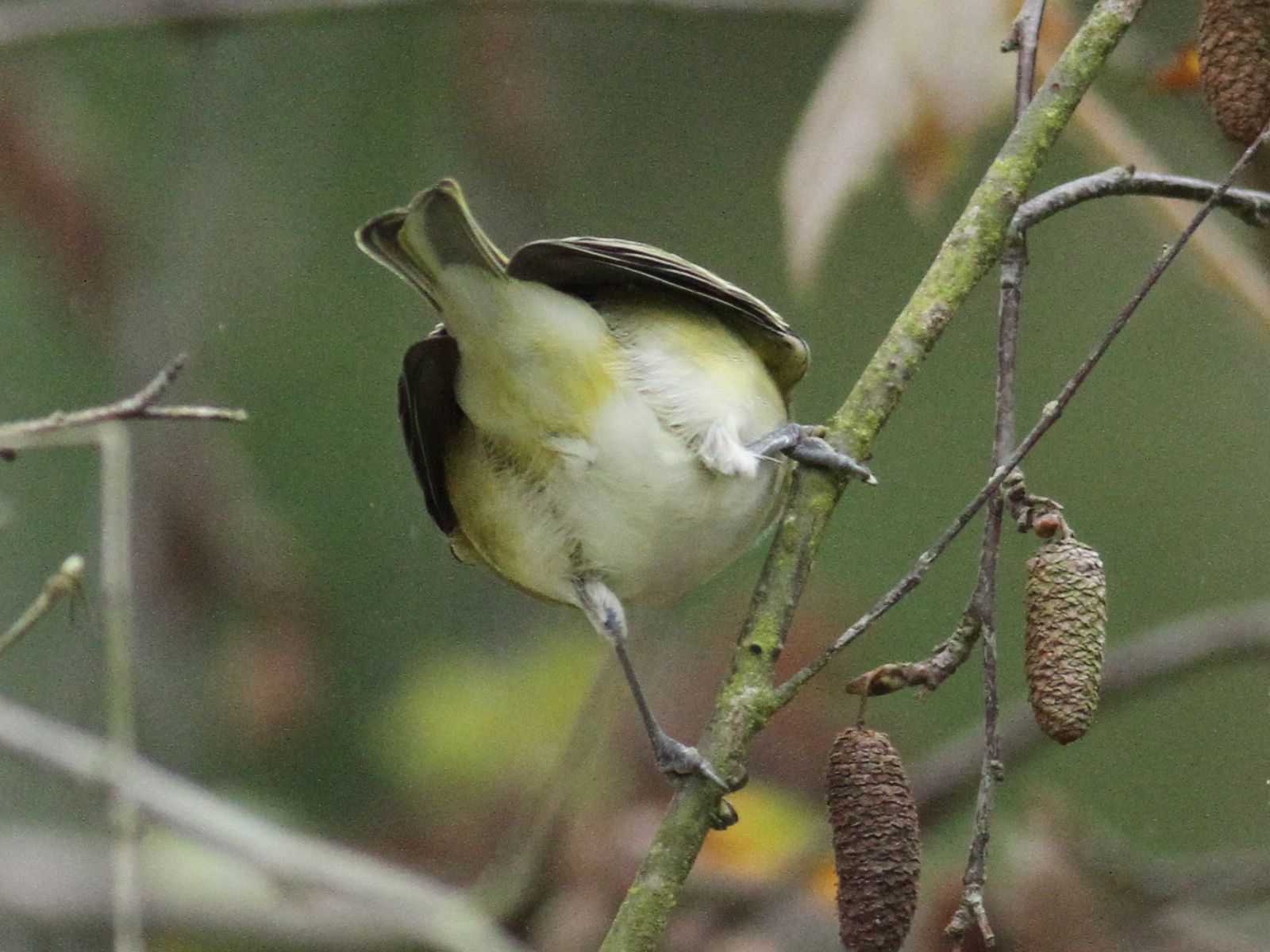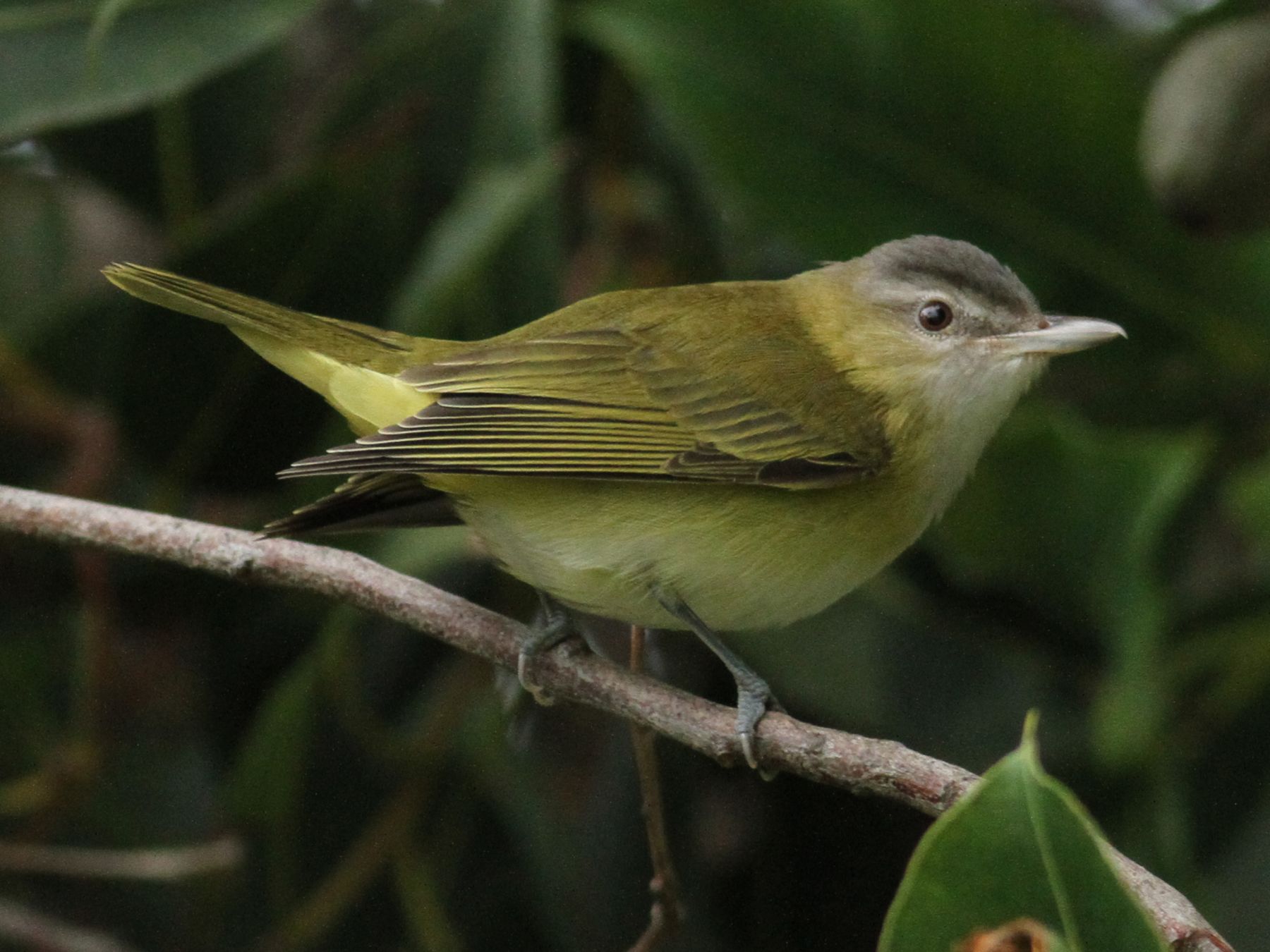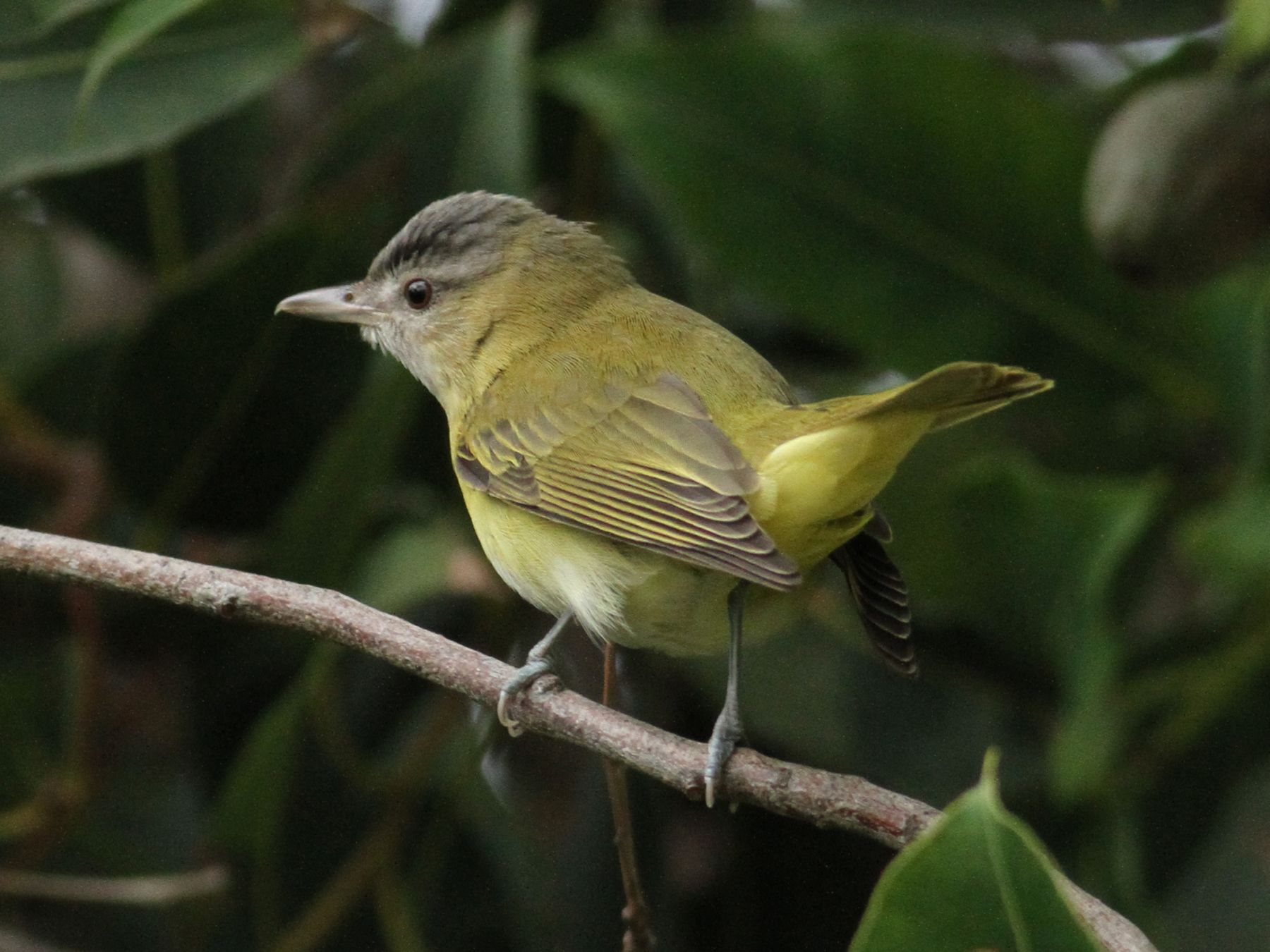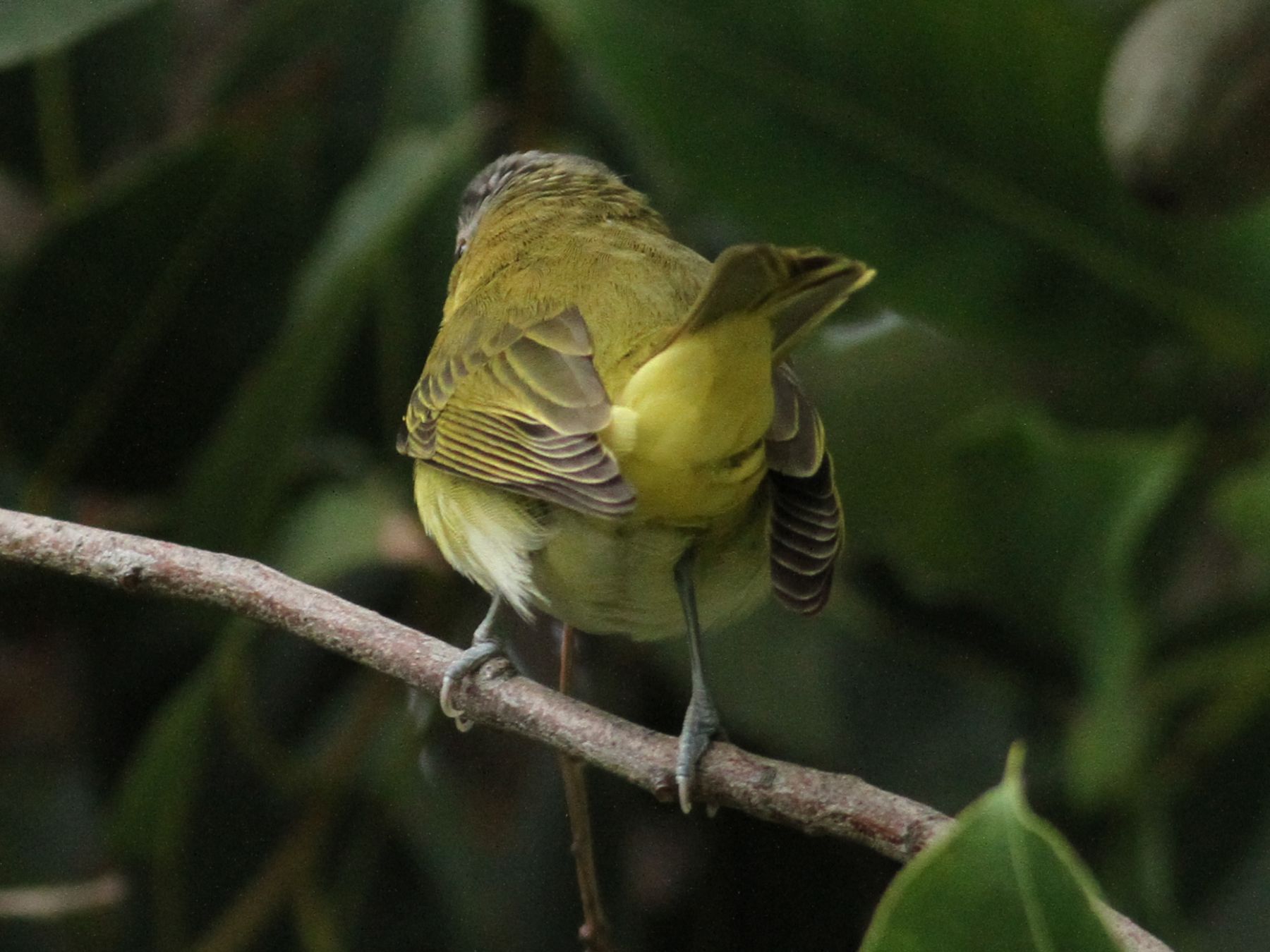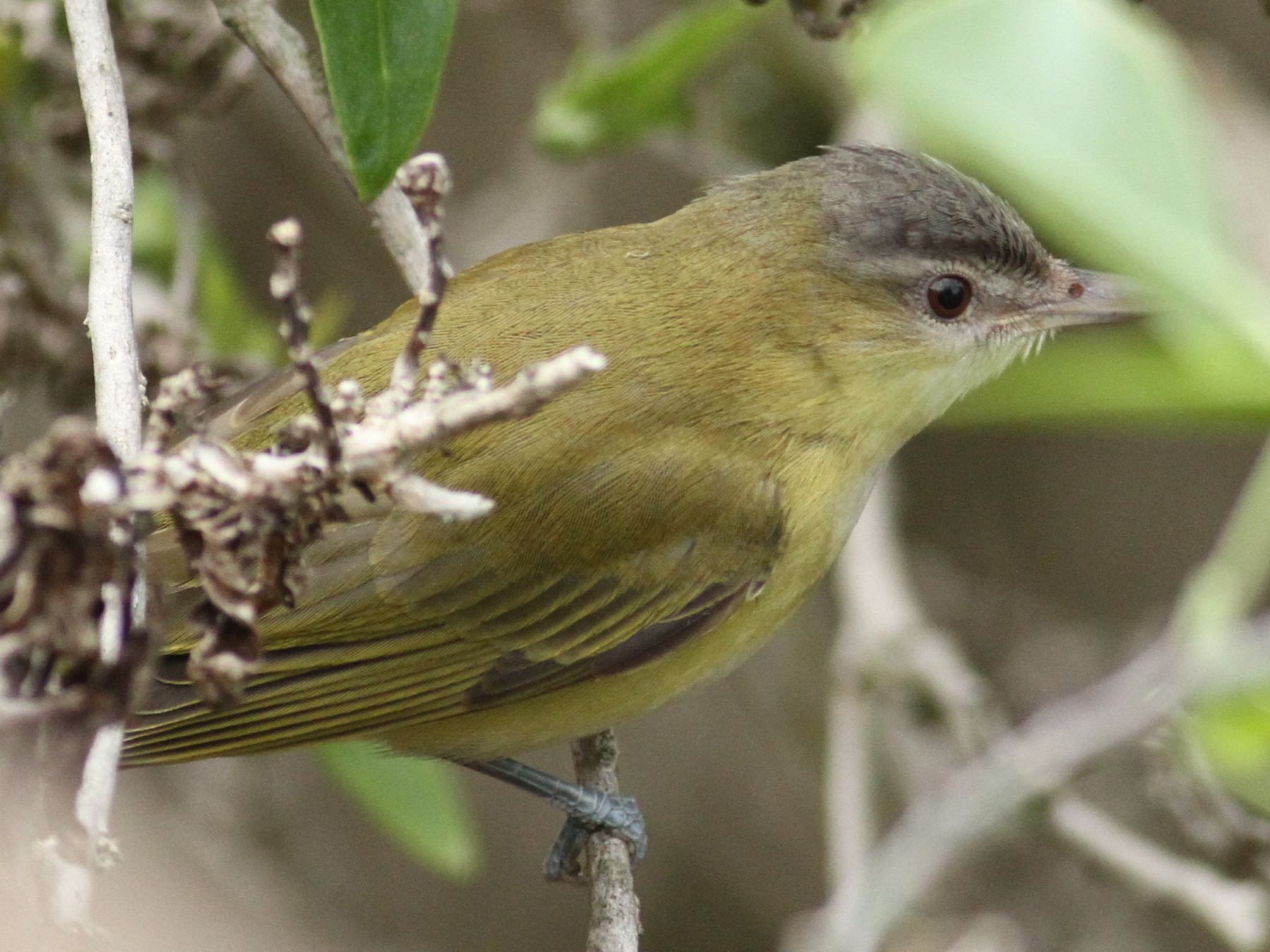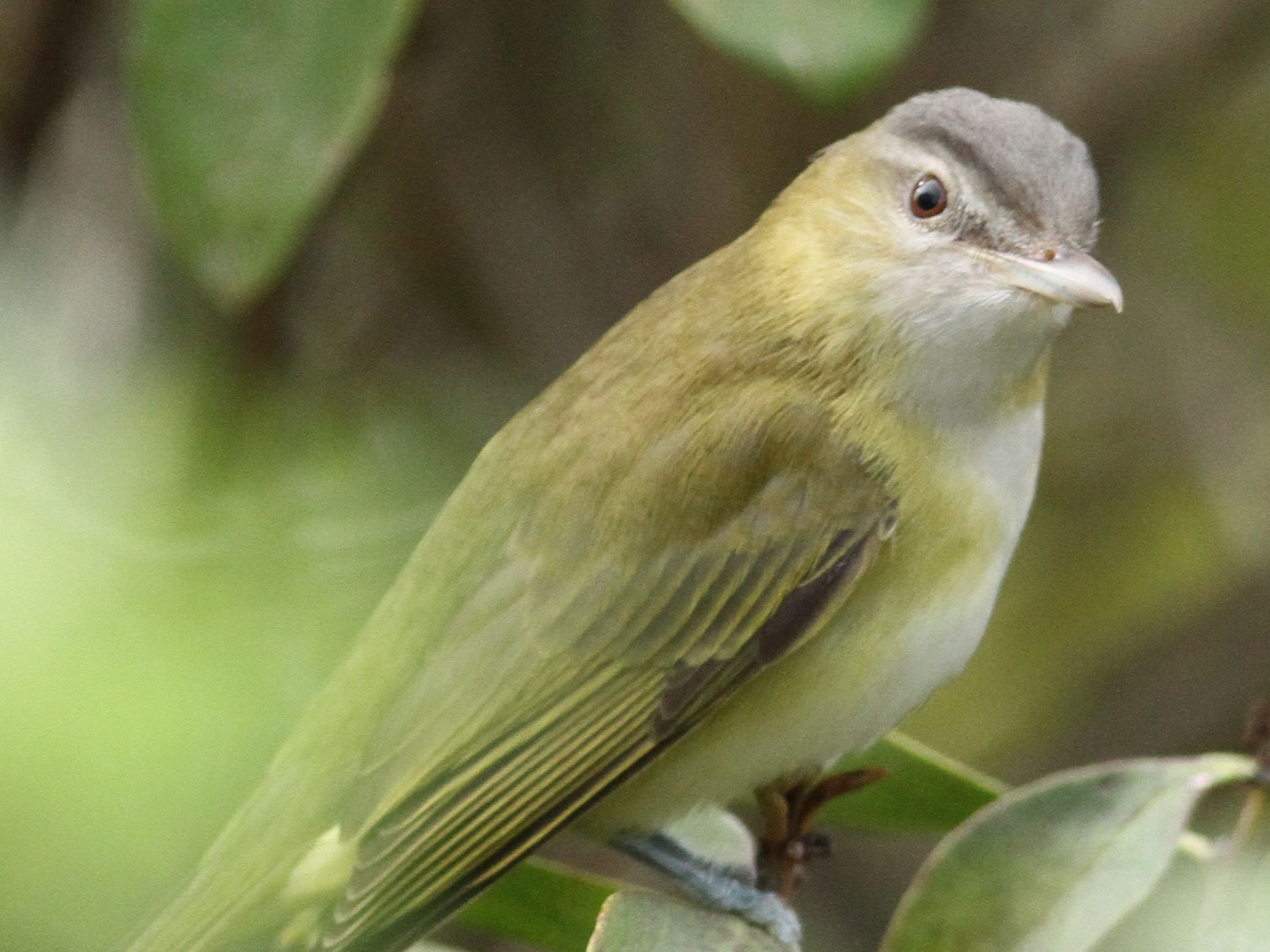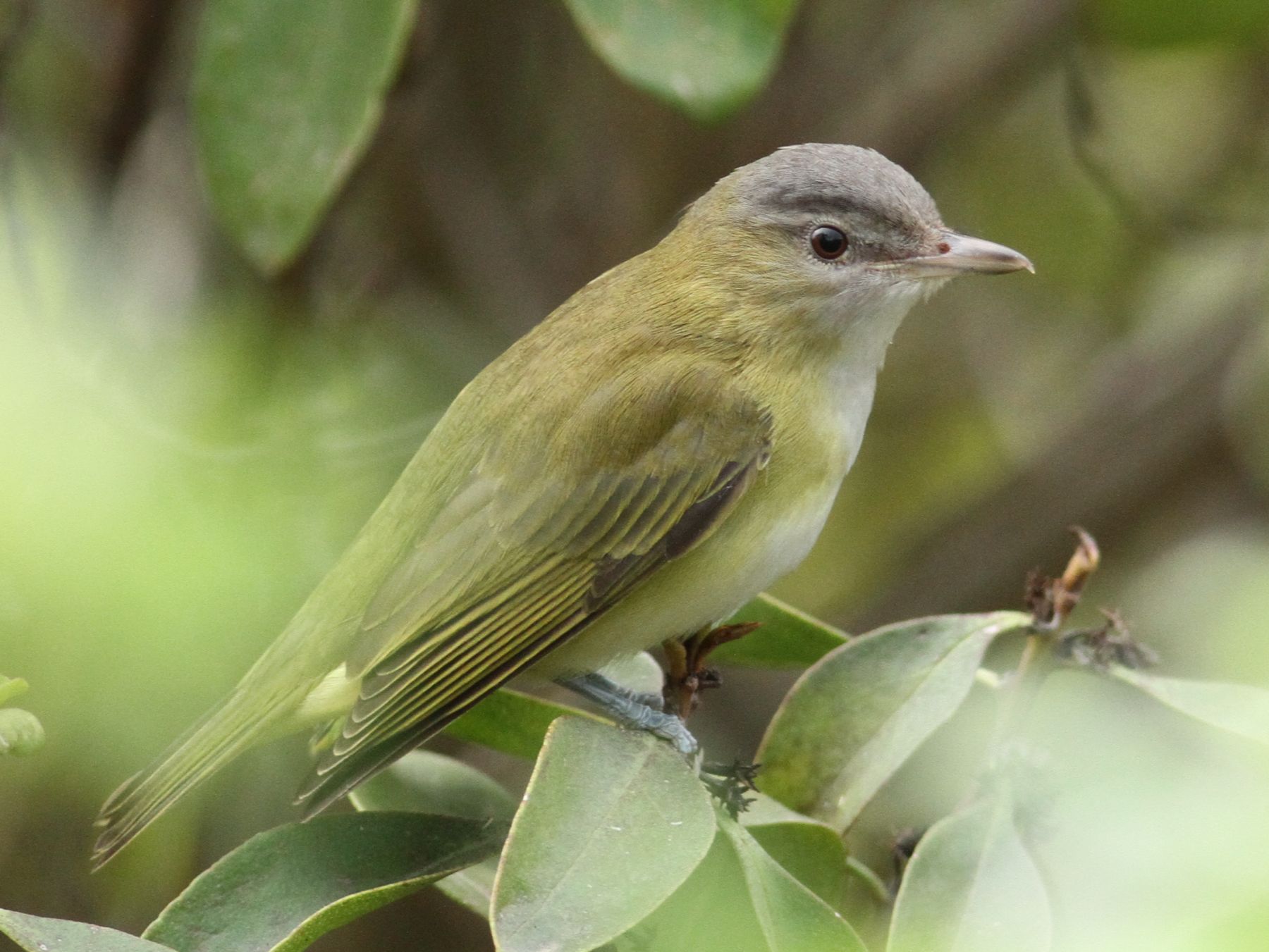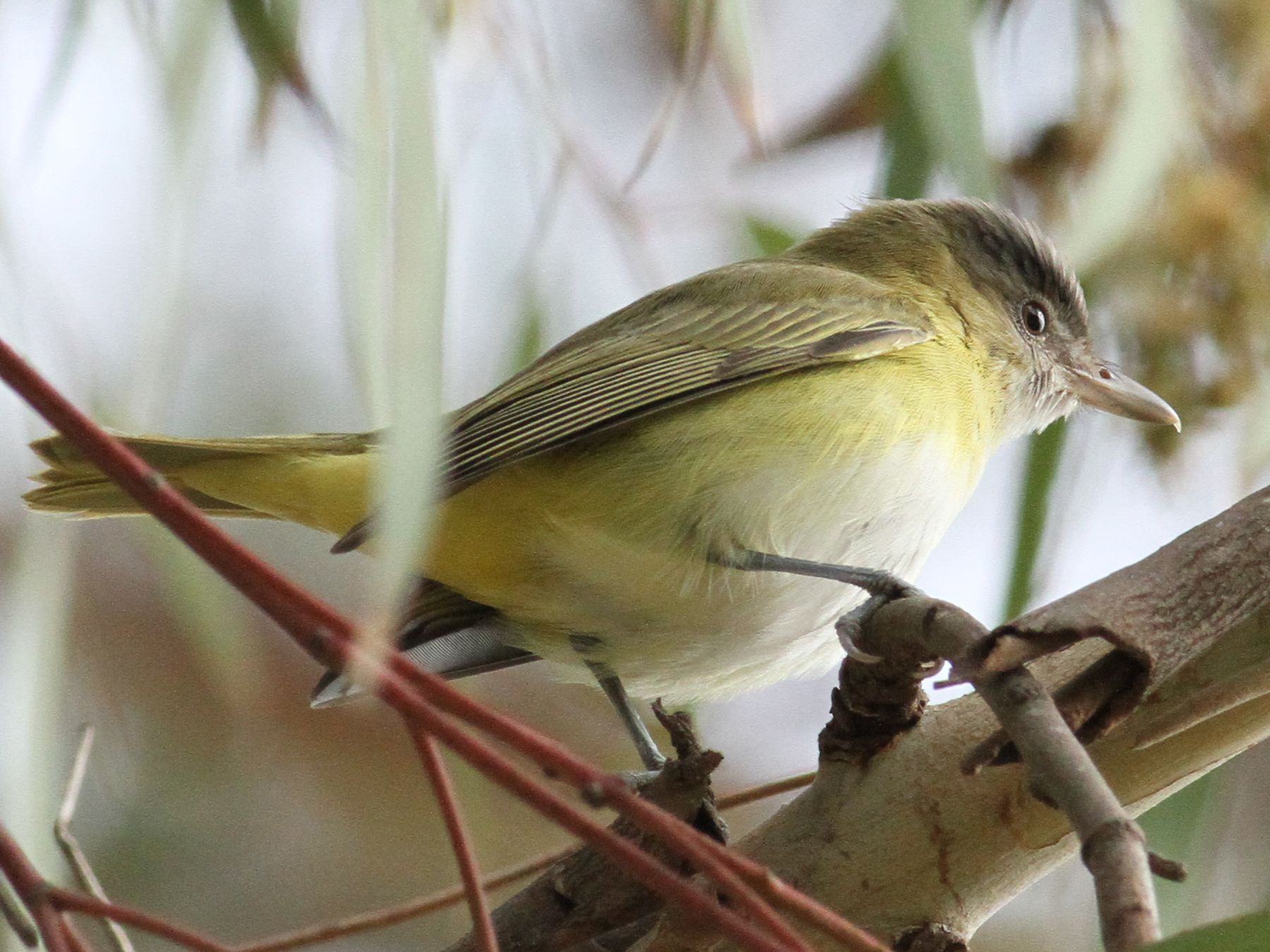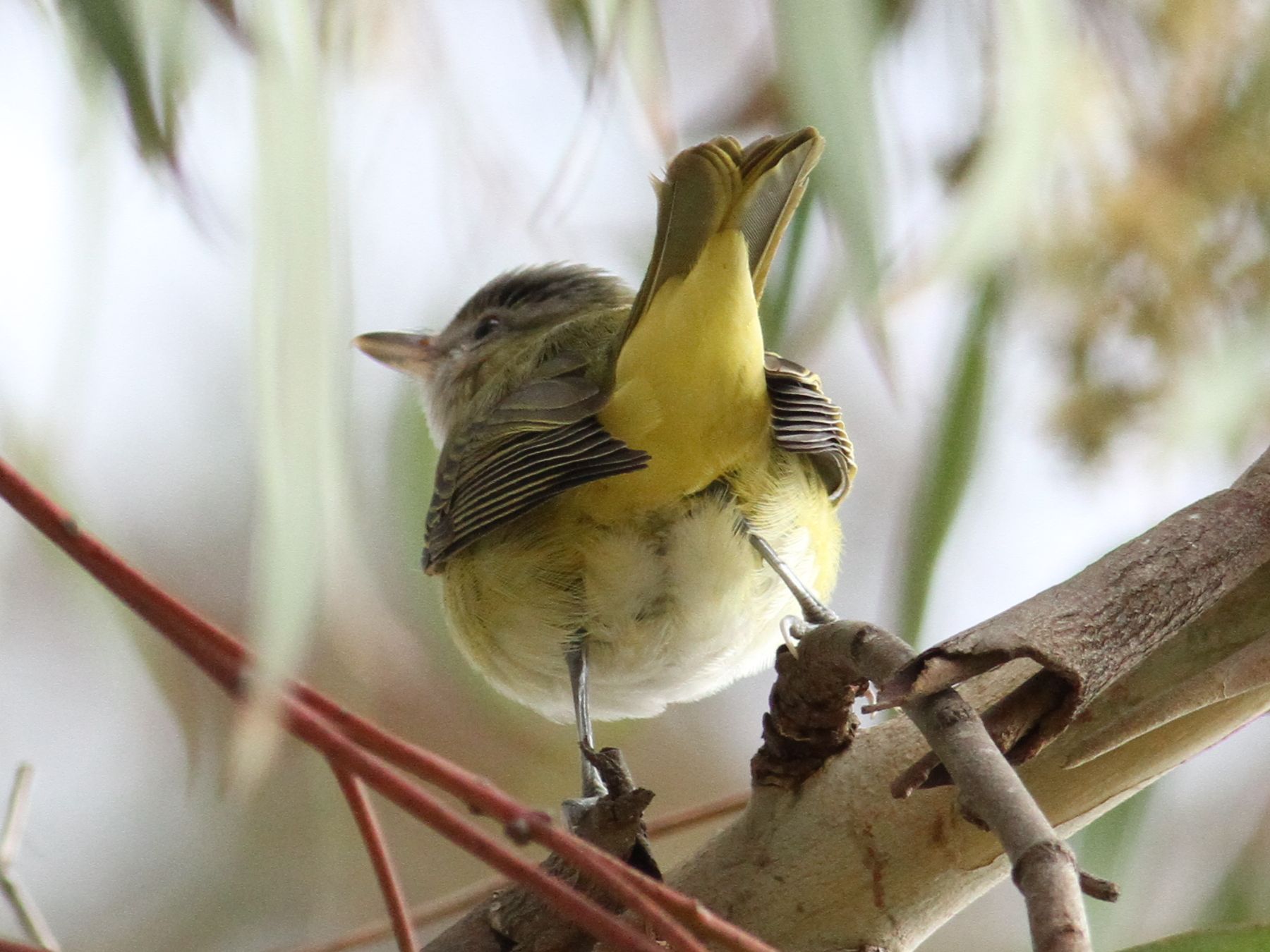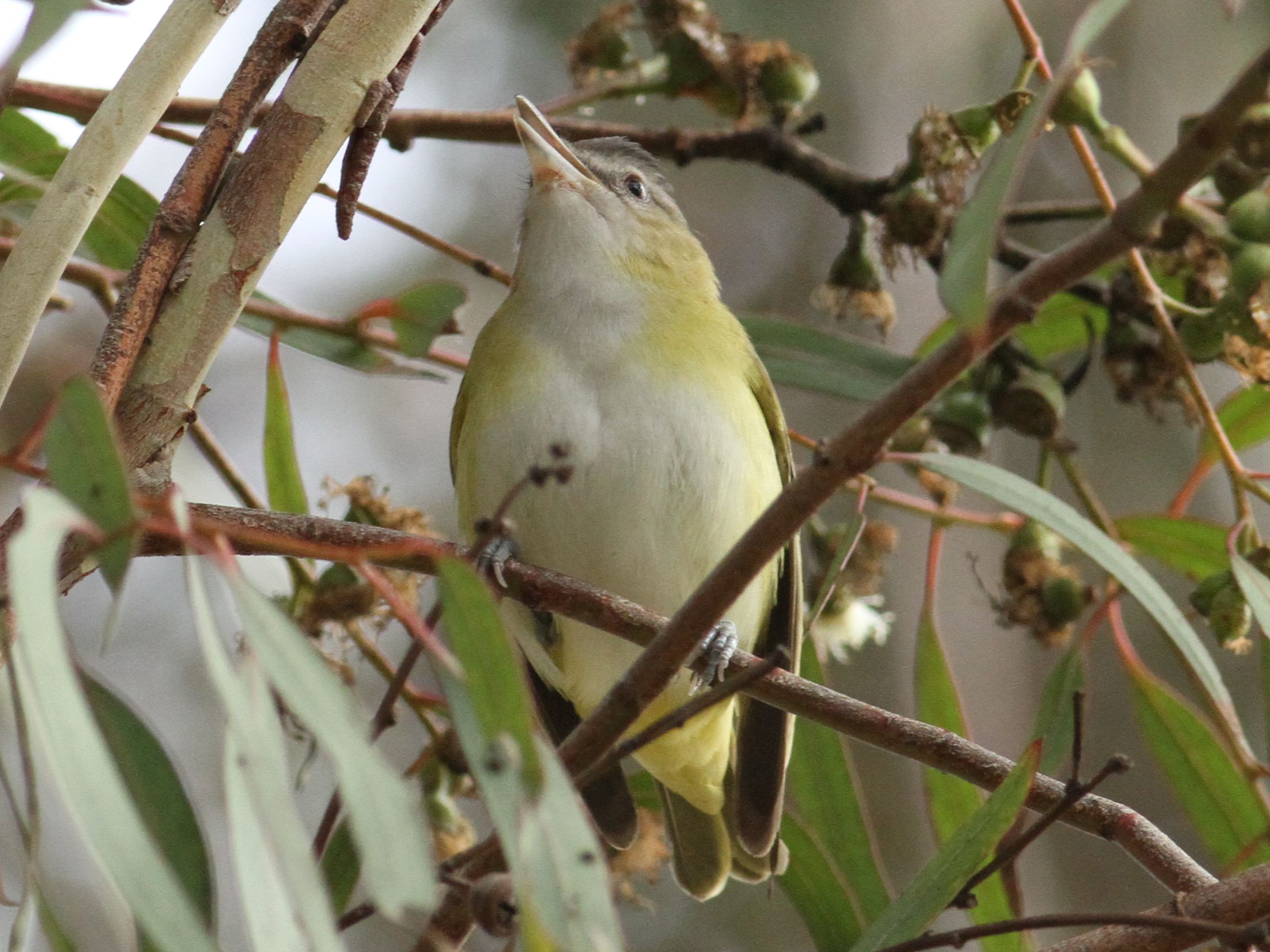[All photographs copyright, Gary Nunn 2013] – I definitely jumped when a short-tailed green bird with a prominent white wing bar hopped out in front of me late this afternoon in a tiny planted cedar tree at Fort Rosecrans National Cemetery. I ditched the binoculars immediately in favor of the camera, who knows where this thing might go next! As it turned out this was a smart move. After showing itself in the tiny cedar for a minute it took off through the cemetery fence. Resurfacing beyond the fence for a few seconds it then just vanished. I did not see it again in spite of considerable searching.
This bird appears to be an “Eastern” Bell’s Vireo most likely of the nominate V.b. bellii form. It is certainly much brighter colored than the arizonae form and, so far as I can tell, also the intermediate colored medius form. Features of plumage coloration matches the detailed description of the nominate bellii form of Bell’s Vireo in Pyle (1997), Identification Guide to Passerines, and the photographs also match very closely the color illustration of a bright “Eastern” Bell’s Vireo shown in The Sibley Guide to Birds (the illustration is presumably of the nominate bellii form, although it is not labeled with a scientific name).
Elements that jumped out at me about this bird included; the much shorter tail compared to our local breeding pusillus form of the species (“Least” Bells’s Vireo), the olive-green coloration of the upperparts, the strong bright yellow wash on the underparts, the bright yellowish uppertail coverts (seen in flight), and the striking white wing bar on the greater coverts. In addition behavioral characteristics support the identification as “Eastern” Bell’s Vireo. This bird flicked its wings and pumped its tail continuously like the eastern birds. Examination of many of the photographs below show the wings in semi-raised (“flicked”) poses, including one shot with one wing flicked up, as well as various shots of the tail pumped upwards.
The “Eastern” Bell’s Vireo is a very rare vagrant to San Diego and California as a whole in fact. There are two previous reports from San Diego County including one found at Point Loma 10 Oct 1988 by Richard Webster and another found more recently in the Nestor neighborhood of Imperial Beach on 02 Nov 2012 by Paul Lehman. I believe this is the first “Eastern” Bell’s Vireo to be photographed in San Diego County and certainly a very nice looking vireo to encounter.




